
 |
Register or Log In To remove these advertisements. |
|
|
|
|||||||
 |
|
|
Thread Tools | Display Modes |
|
|
|
|
#1 |
|
Lost amongst the CORN
Join Date: Nov 2002
Location: Northern Iowa
Posts: 1,072
|
What's hiding in the tool box part two
I posted this on a few other forums I visit and thought you guys might enjoy it as well.
Back again for the second installment showcasing more of my hammer, dolly and spoon collection. What first started out as an innocent documentation process for insurance spawned into this little project. So I thought I would share my auto body tool collection from years long gone. A bit of tool design and usage mixed in with a little history and origin. In case you were wondering because Iíve had numerous emails, nothing is for sell! Nothing but merely an avid collector sharing a collection of body tools in hopes the past never dies. Most of my collection will get restored and never be used again. The older tools in my opinion are far superior compared to todayís currently available line of auto body tools. Since I literally have a ton of photos please refrain from any comments until am finished loading to keep it uniform. For part one of whatís hiding in the toolbox please follow the link. http://www.chevelles.com/forums/show...t=whats+hiding Hope you enjoyÖEric Not sure of the brand as a few companies made similar styles but an educated guess tells me itís Pexto or a Stiles-Herman, leaning more towards a Pexto. Pexto still exists today but manufactures metal fabrication tools such as stomp shears and punches. Stiles-Herman was a St. Louis based company making specialized body repair tools. This type of hammer is known as a blocking hammer and really for metal forming or shaping versus dent repair. The hammer faces have a fairly large crown and the hammer is fairly heavy. 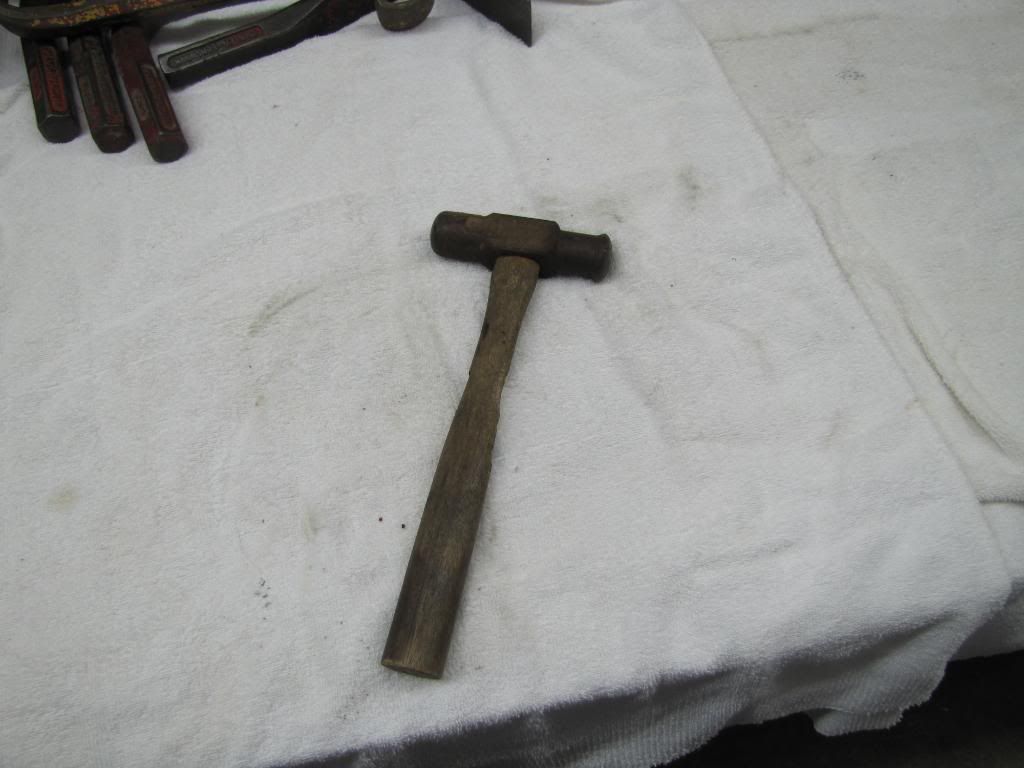 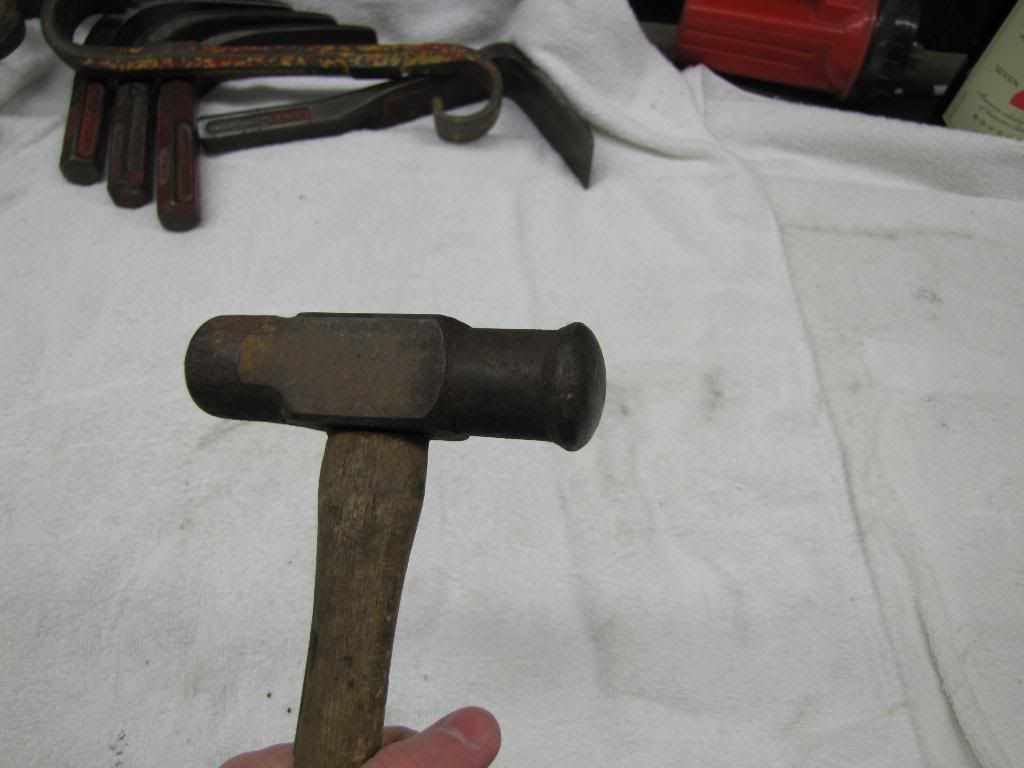 This blocking hammer is a Stiles-Herman, can plainly see the name embossed into the tool. Much larger in size then the pervious blocking hammer also has an offset head so the user could reach into deeper panels. 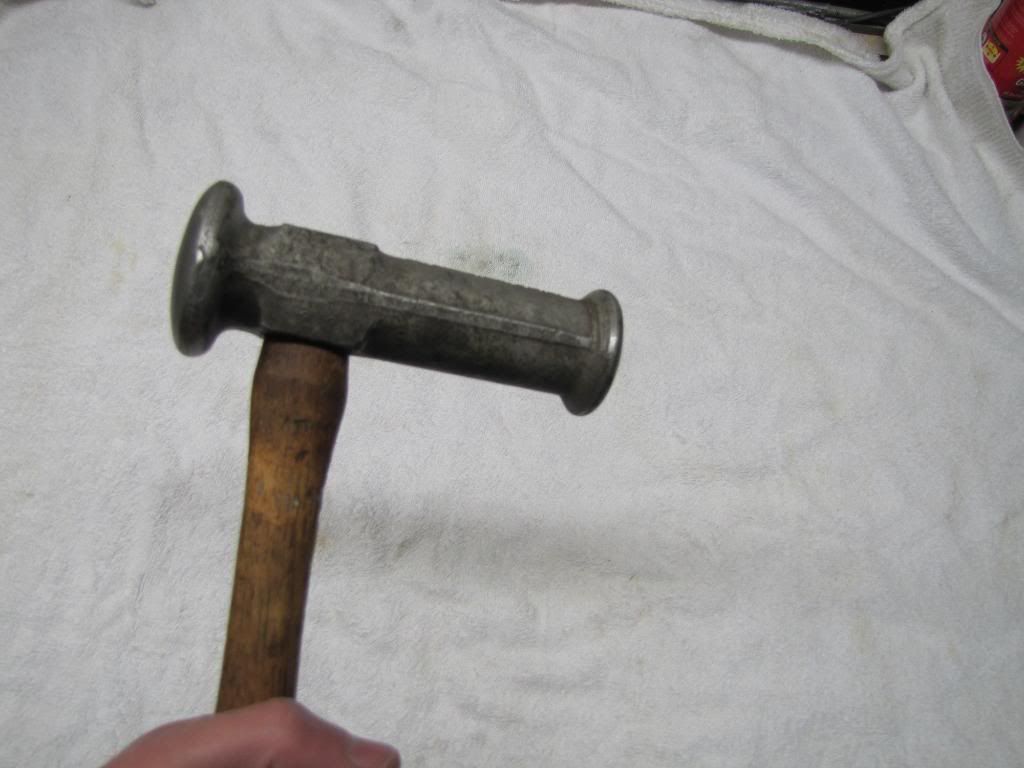 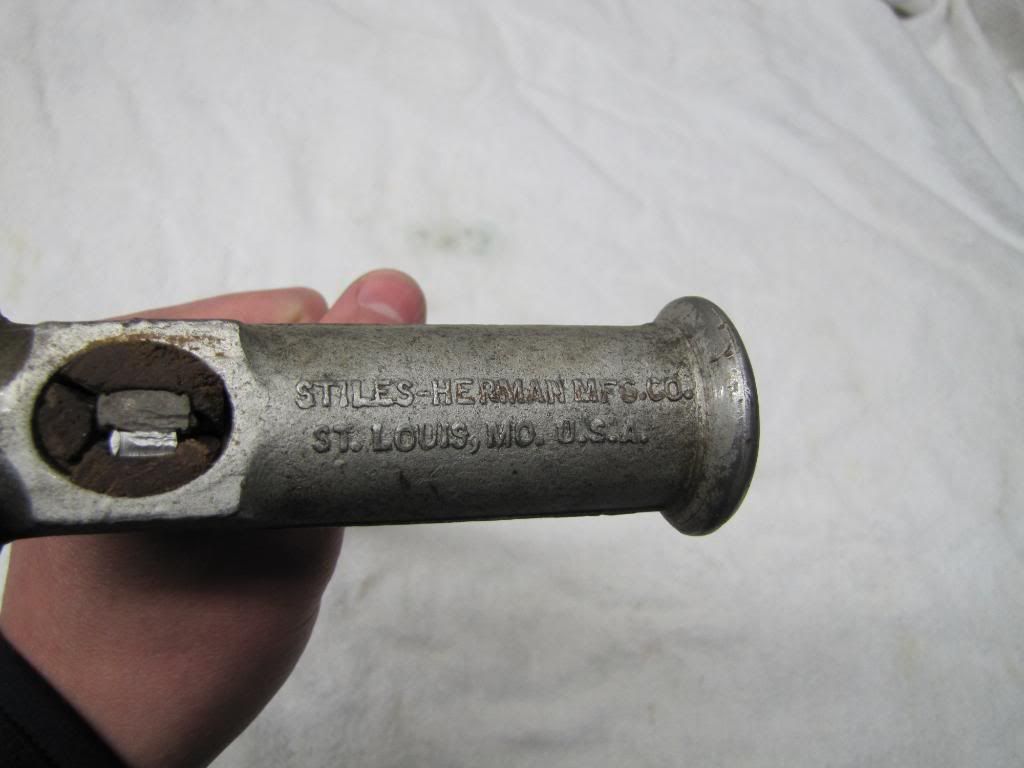 Compared to a regular body hammer, the weight, sheer size of the head and shape make this hammer best suited for metal forming. 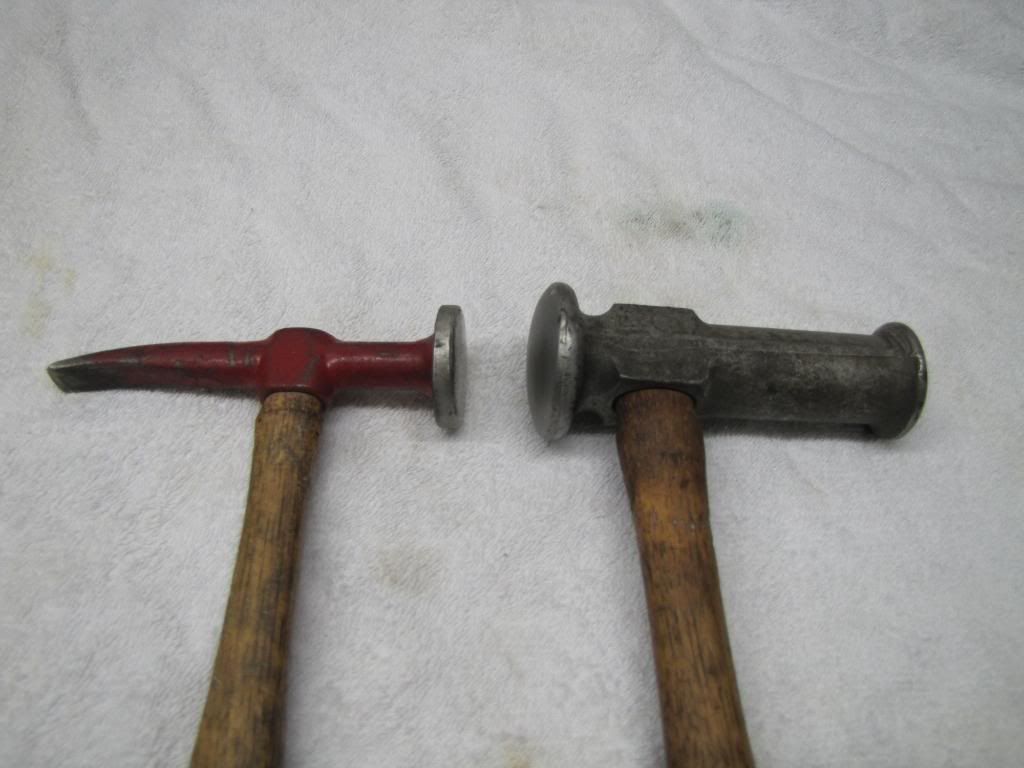 Fairmount 160-G heavy bumping hammer. In the previous post I mentioned bumping hammers are typically short and heavy hammers normally used for roughing out dents. Once the damage is roughed out the repair man switches to the lighter dinging hammers to finish the repair. I believe this hammer to be a NOS 1960ís era hammer due to the design of the logo. 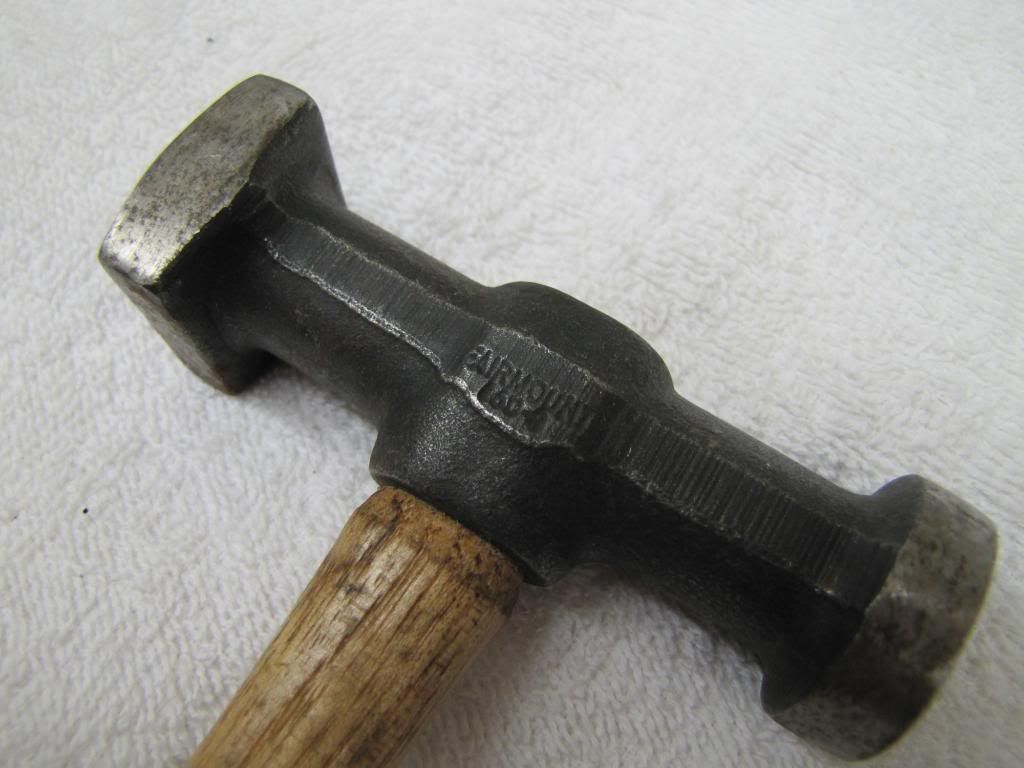 If you find a Fairmount hammer the company name and number are stamped into the head and the number can also be found on the bottom of the handle too. 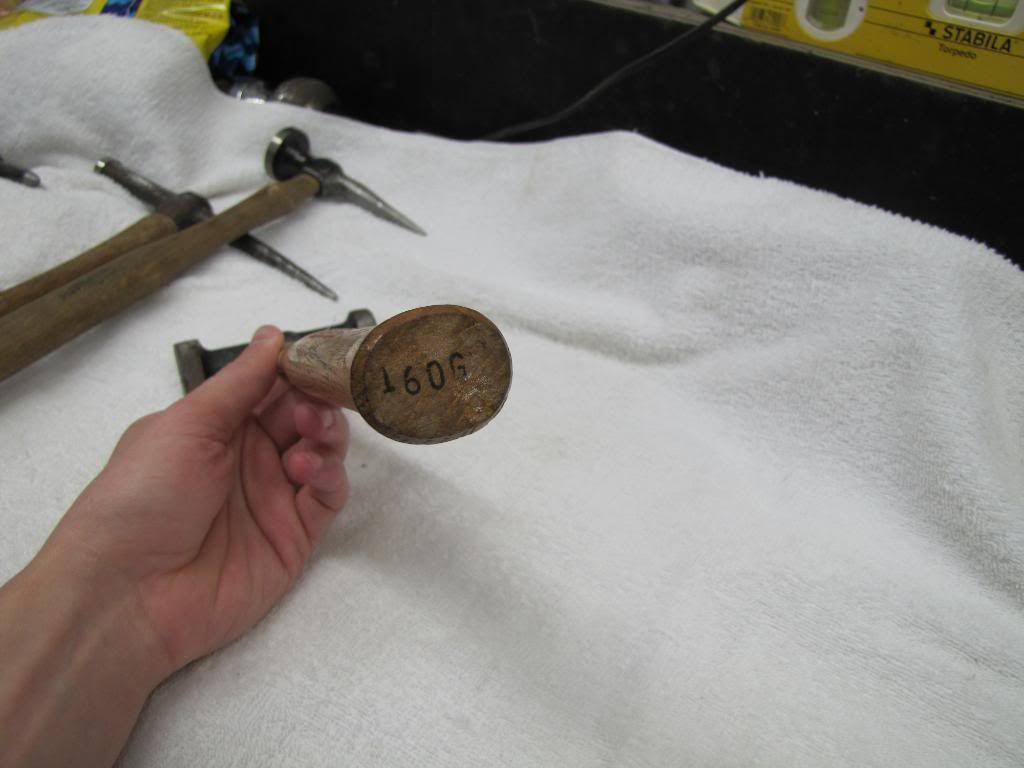 The Fairmount 160-G on the left versus the Porter Ferguson BH-4 on the right. Both are bumping hammers and you can see the Fairmount is much thicker and heavier, but the P-F has a better balance making it easier to use. 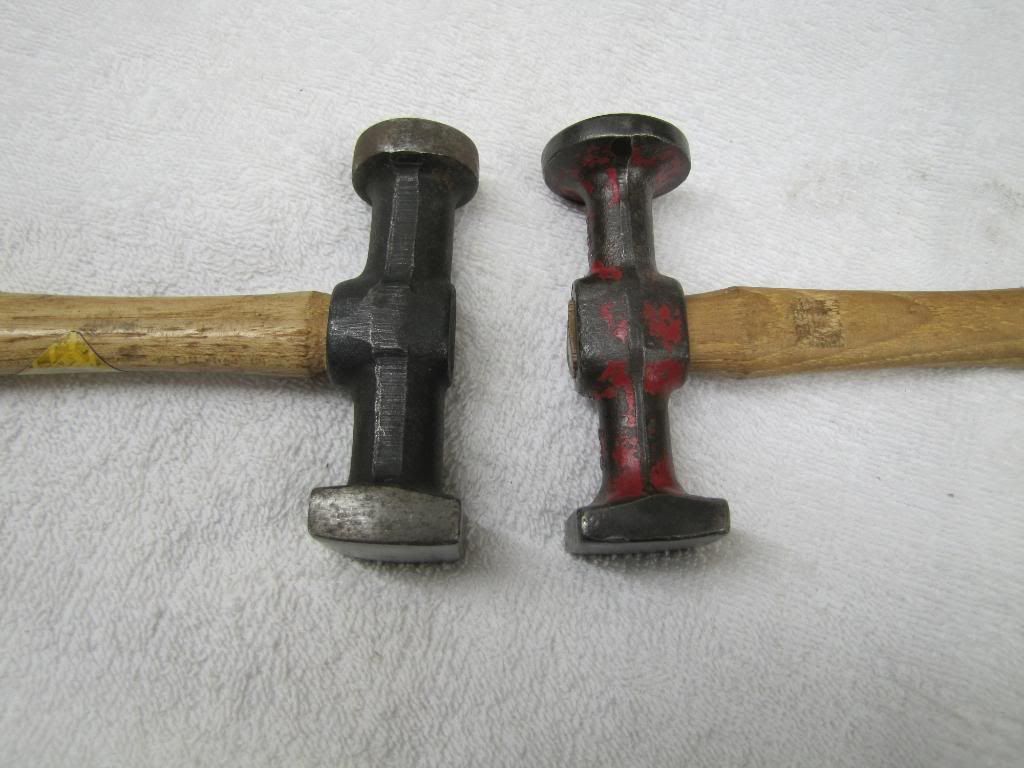 Another bumping hammer, this one is from Bonney, another nice quality hammer and somewhat hard to find. A side note about Bonney tools is they are relabeled Stanley tools. Stanley relabeled and sold their tools under the Stanley, Bonney and New Britain name. All Stanley brand hammers are easy to spot because the hole for the handle in hammer head is a long rectangle as other hammers typically use an oval shaped opening.  Fairmount 164-G heavy pick hammer the heavy weight of a bumping hammer but with one end having a pick. 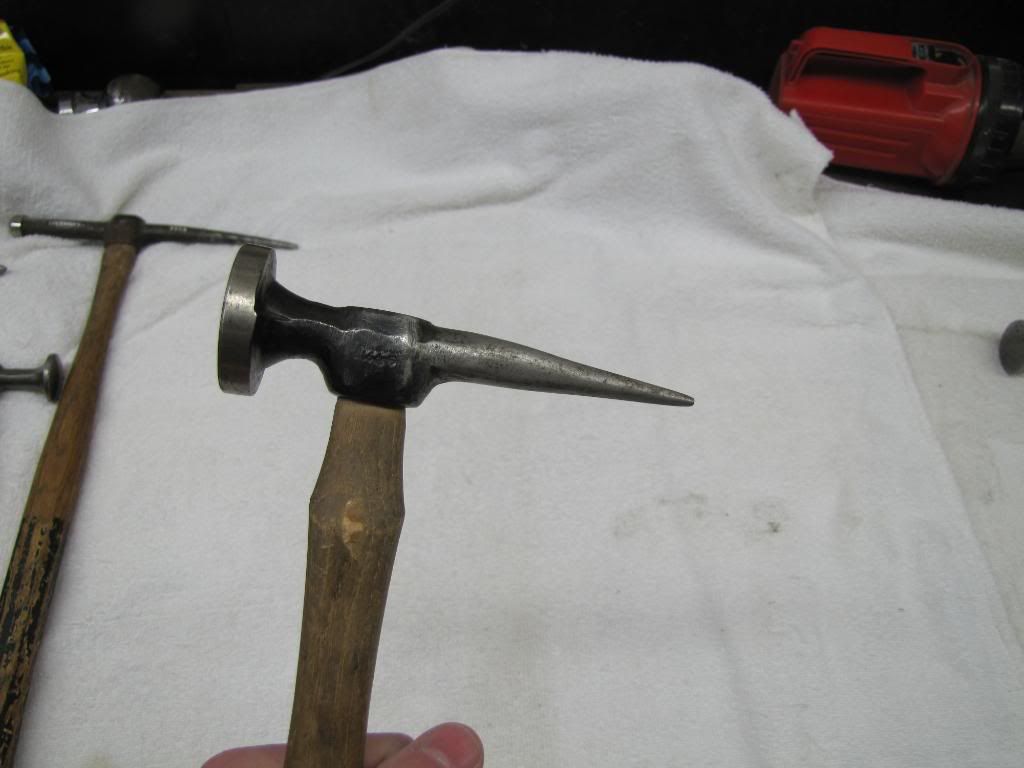 Early 1980ís Martin pick hammer, the early Martin hammers have the name in cursive writing. Martin bought out Fairmount in 1983. This one is a 158-G pick hammer, similar to the 164-G shown above but less weight, longer pick end and a slight crown on the face. 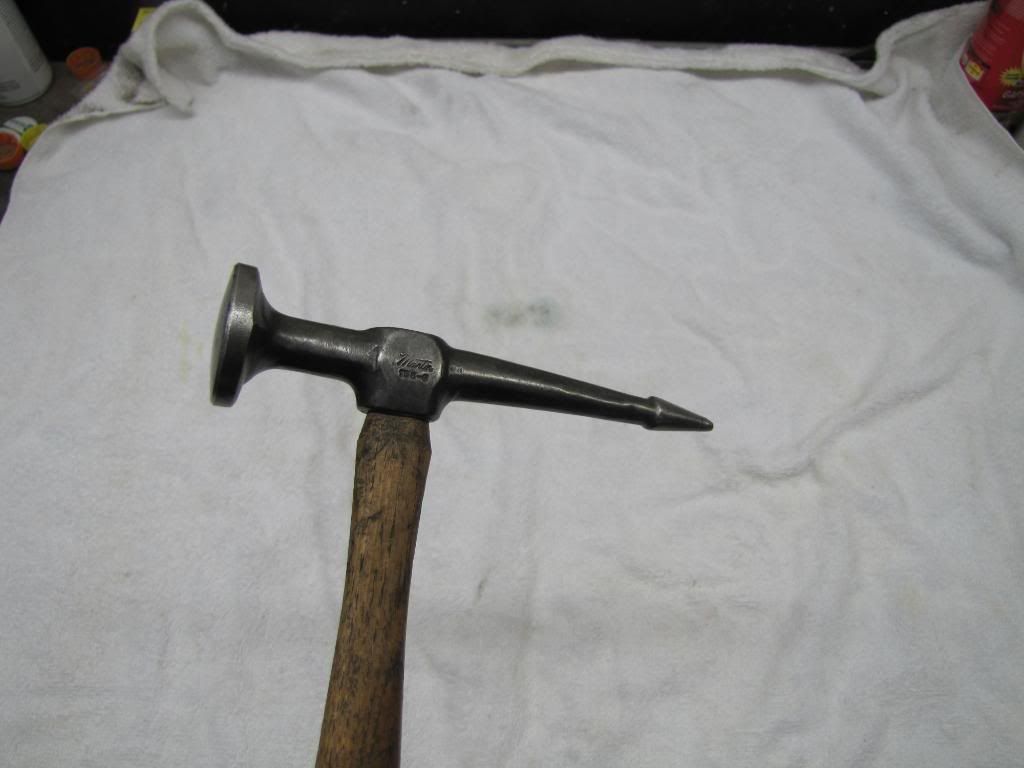 The early Martin name in cursive, the current Martin hammers have no name or number stamped in the head instead the handle is marked. 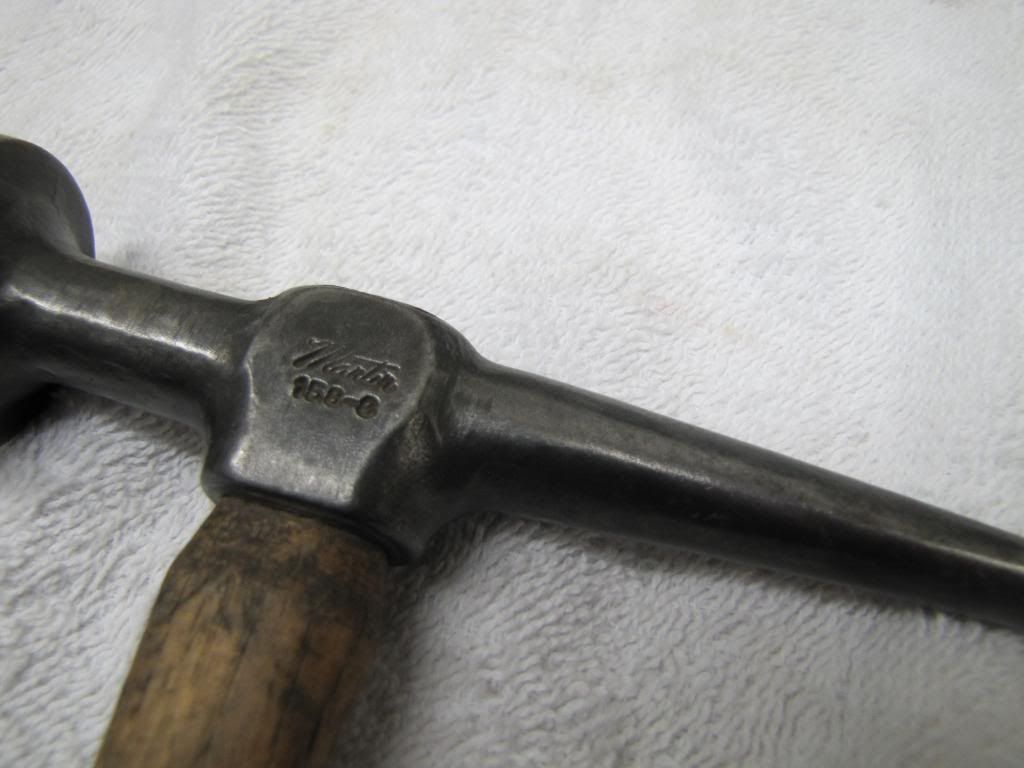 Another pick hammer, this time itís a Heller. Heller is famous for making farrier equipment since the 19th century. For those whom donít know, a farrier deals with horses such as installing horse shoes. Anyway, Heller body tools are not heavy sought after tools other then their body files which are a highly collectible item. All Heller tools came equipped with their famous horse head logo. 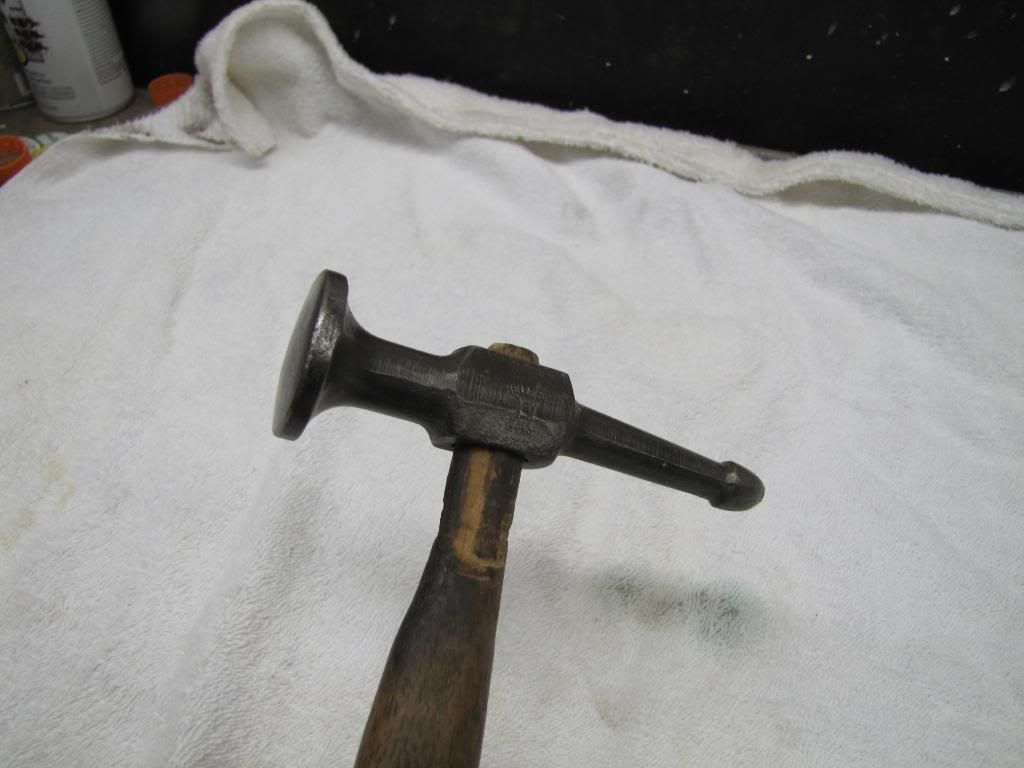
__________________
Currently working on How To Videos and custom metal 70 Chevelle gettin Sliced and Diced Anything But STOCK 70 Chevelle SS455 not a typo its a BUICK BABY 49 and 72 Chevy Trucks restored to original...close to it Drommer Stor....Norwegian for Dream Big http://s969.photobucket.com/albums/a...lle/?start=all https://www.flickr.com/photos/47922830@N03/ Pictures of my work and projects |
|
|

|
|
|
#2 |
|
Lost amongst the CORN
Join Date: Nov 2002
Location: Northern Iowa
Posts: 1,072
|
Re: What's hiding in the tool box part two
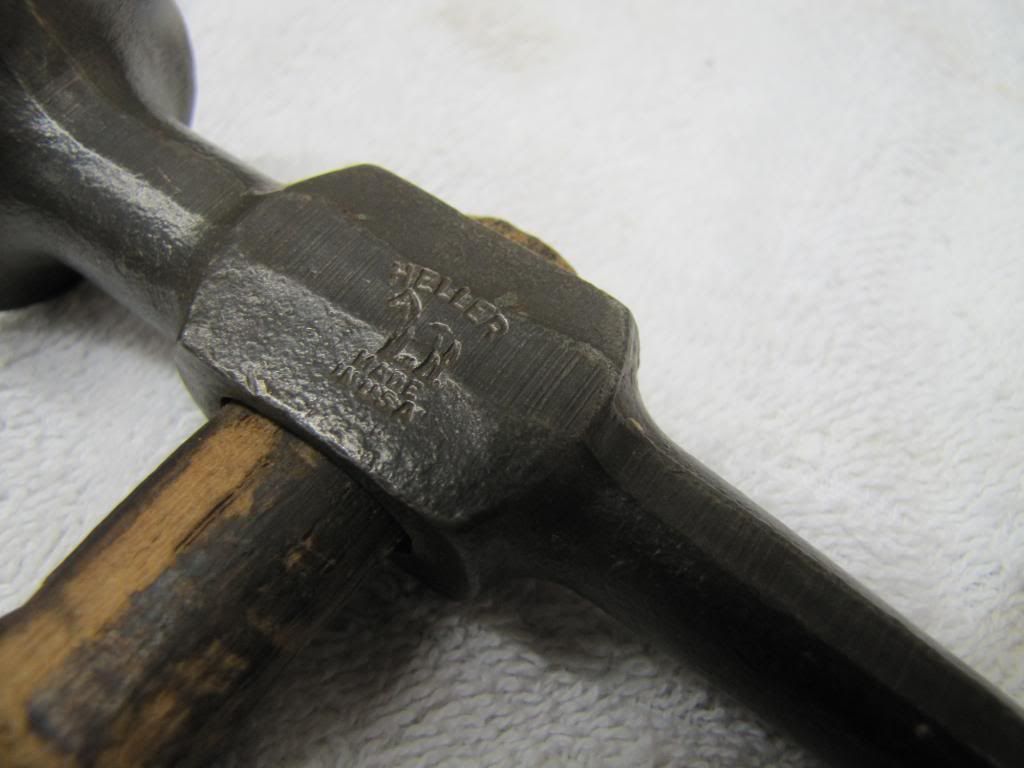 Blackhawk 1155 long pick hammer. Blackhawk was bought out by Stanley Tools in the mid 1950ís then became part of the Proto line when Stanley bought Proto in the 1980ís time frame.  Porter Ferguson BH-2 short pick hammer, both hammers are the same just different handles. I have three of these BH-2 pick hammers. 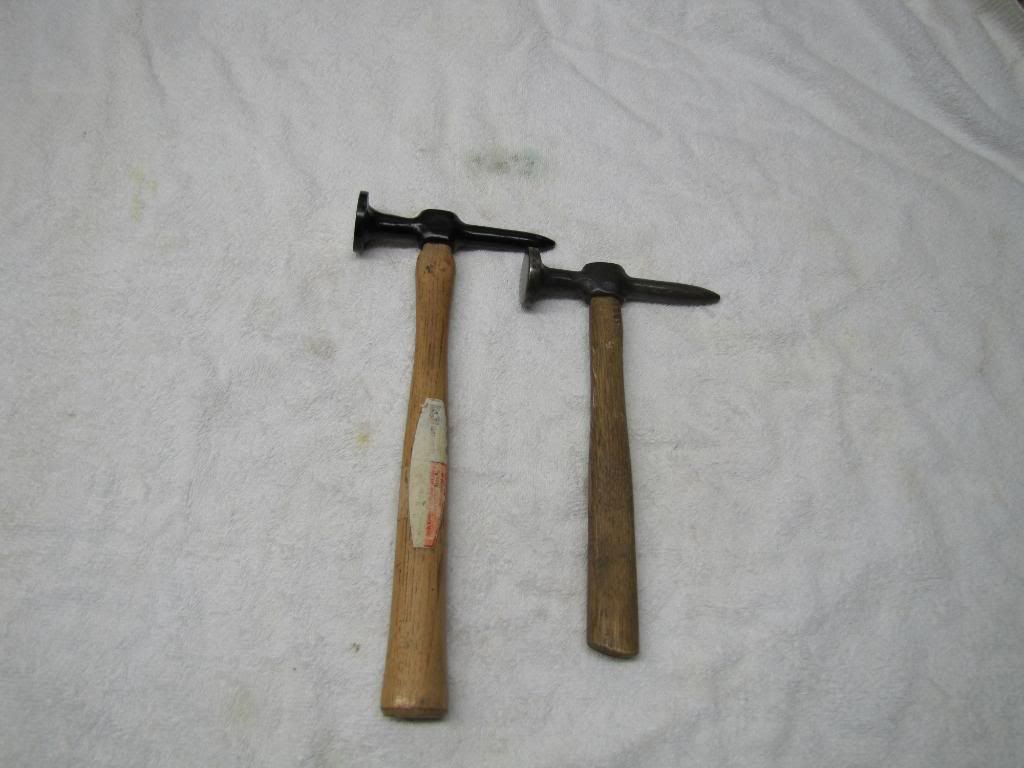 Porter Ferguson BH-7 long pick hammer. 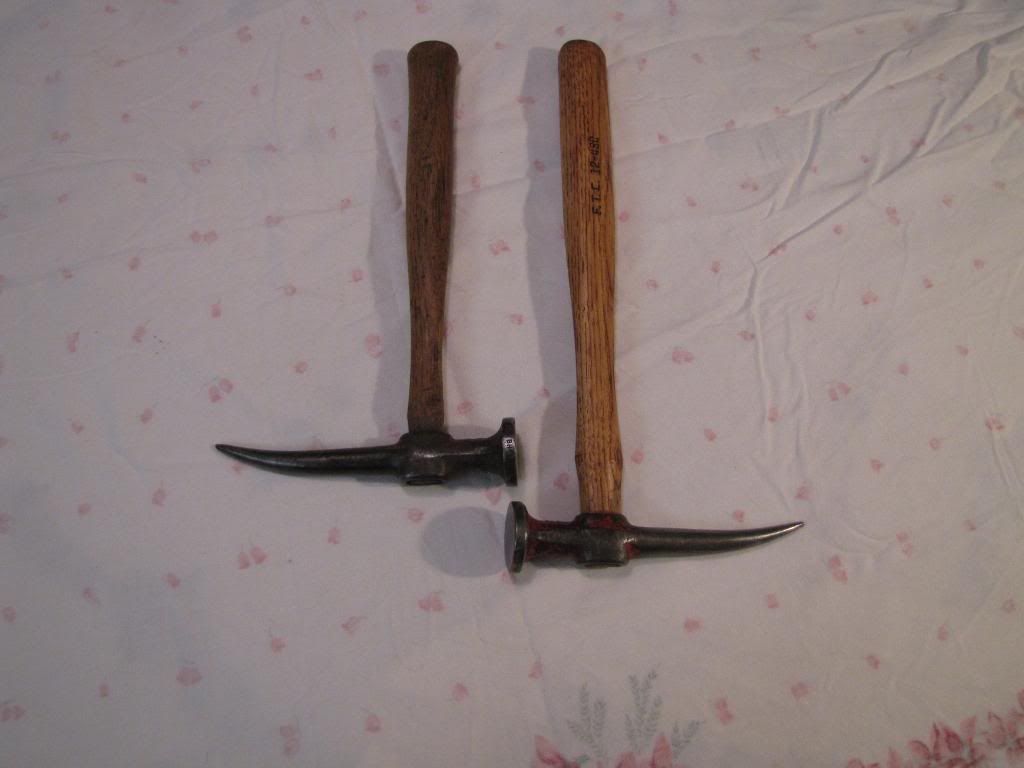 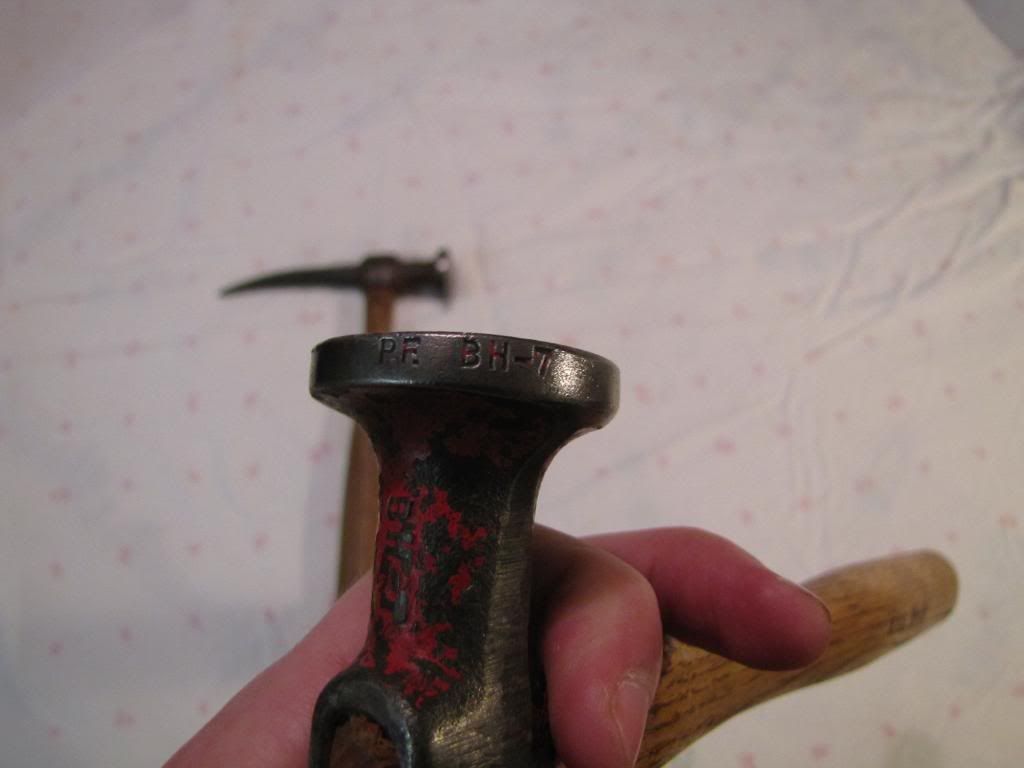 Porter Ferguson BH-2 short pick hammer on top versus the BH-7 long pick hammer on bottom. Both hammer faces are the same but the pick end is different as you can see. 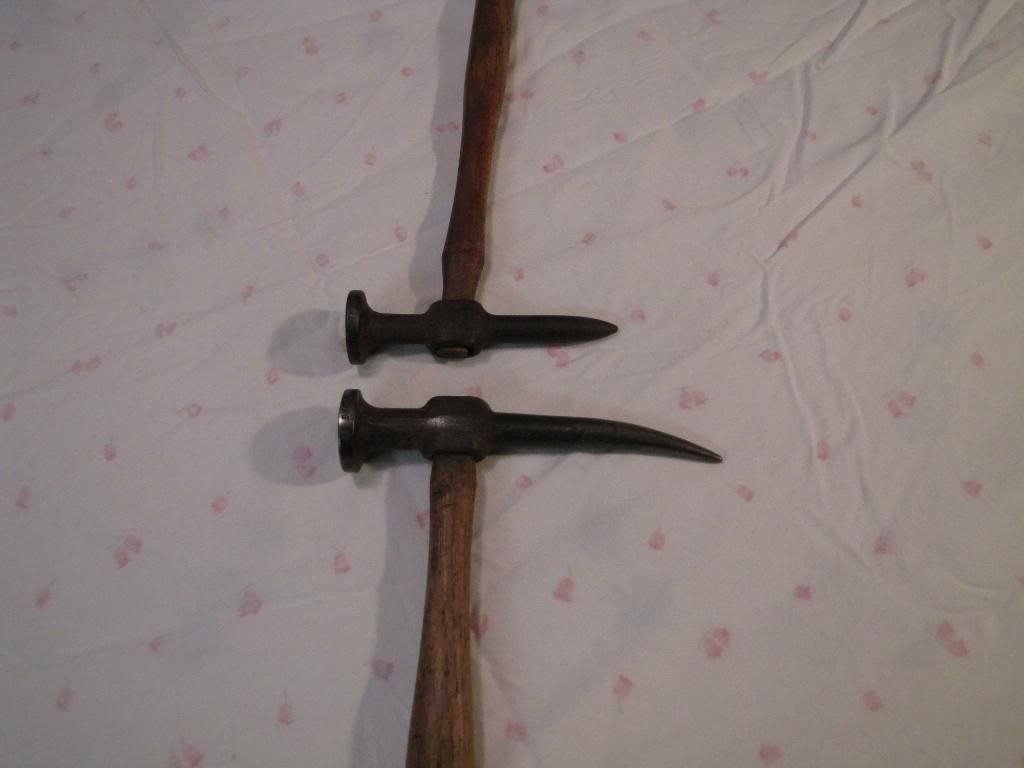 Porter Ferguson BHR-12 shrinking hammer. Iím not a fan of shrinking hammers as they are merely a gimmick but am one more hammer closer to having the complete Porter Ferguson hammer set. The idea behind the serrations is to put small pick like dents in the metal essentially causing a drawing effect or tightening of the metal. Unfortunately, they donít shrink metal. 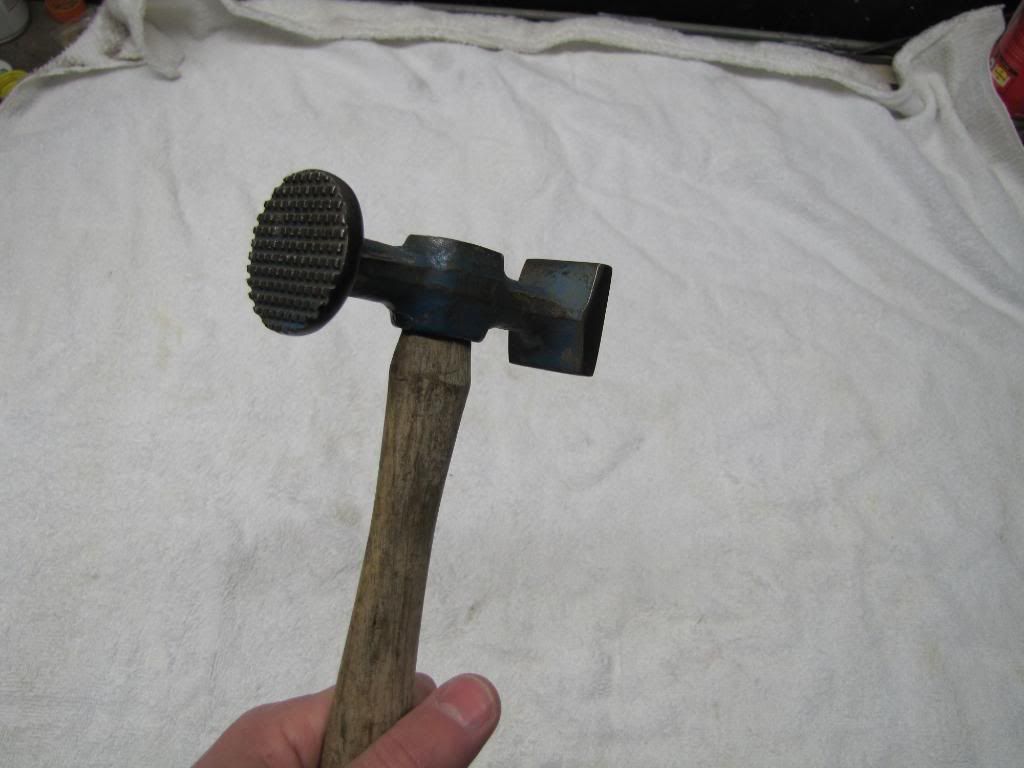 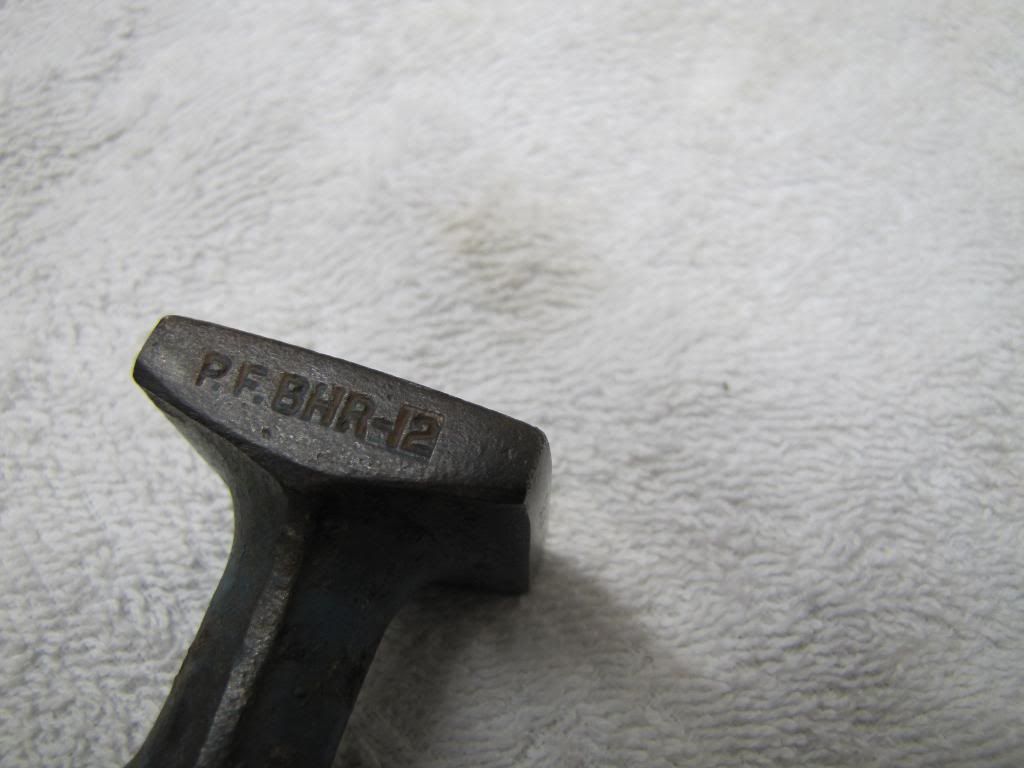 A different spin on the shrinking hammer concept is this Ecora shrinking hammer. I know very little about this hammer or the company.  The head is a two piece design with the striking face being encased in rubber. The two piece design allows the shrinking head to be somewhat free floating and rotate ever so slightly.  The Porter Ferguson BHR-12 on the left and the Ecora on the right. The idea is to twist the hammer as you strike the metal so the face gathers the metal together. A similar hammer to the Ecora is currently on the market with an internal cam which rotates the head as you hit the hammer. None of the designs work so avoid the shrinking hammer trap. 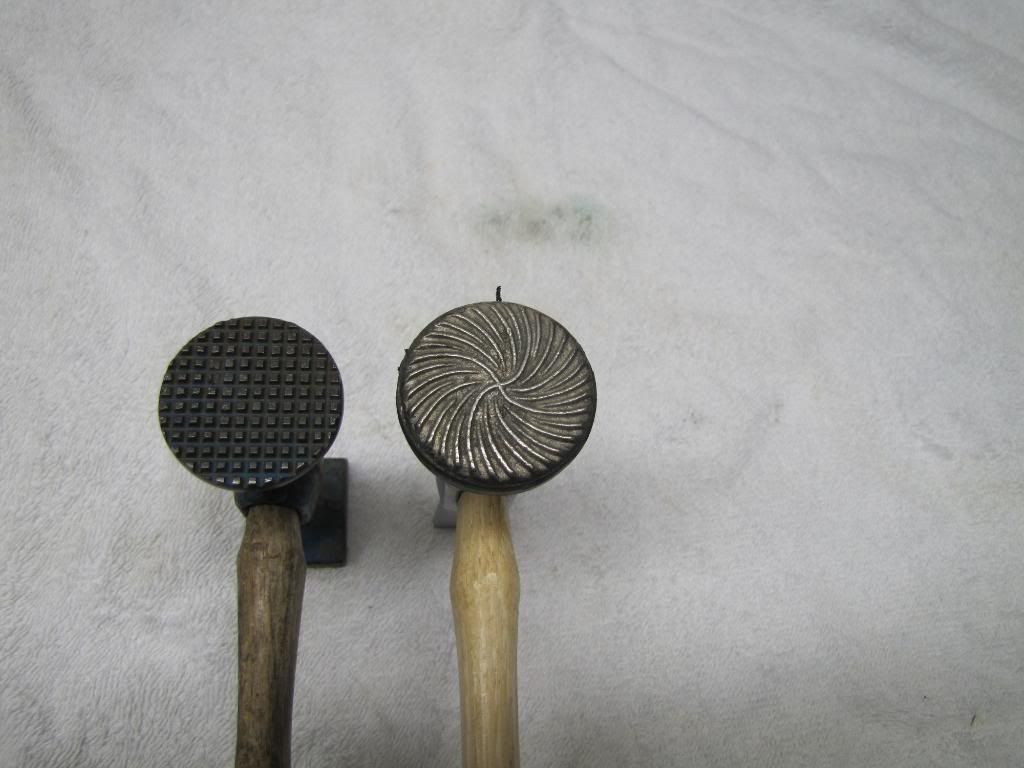 Fairmount 153-S straight chisel shrinking hammer. Has the same serration pattern as the P-F BHR-12 shown above. 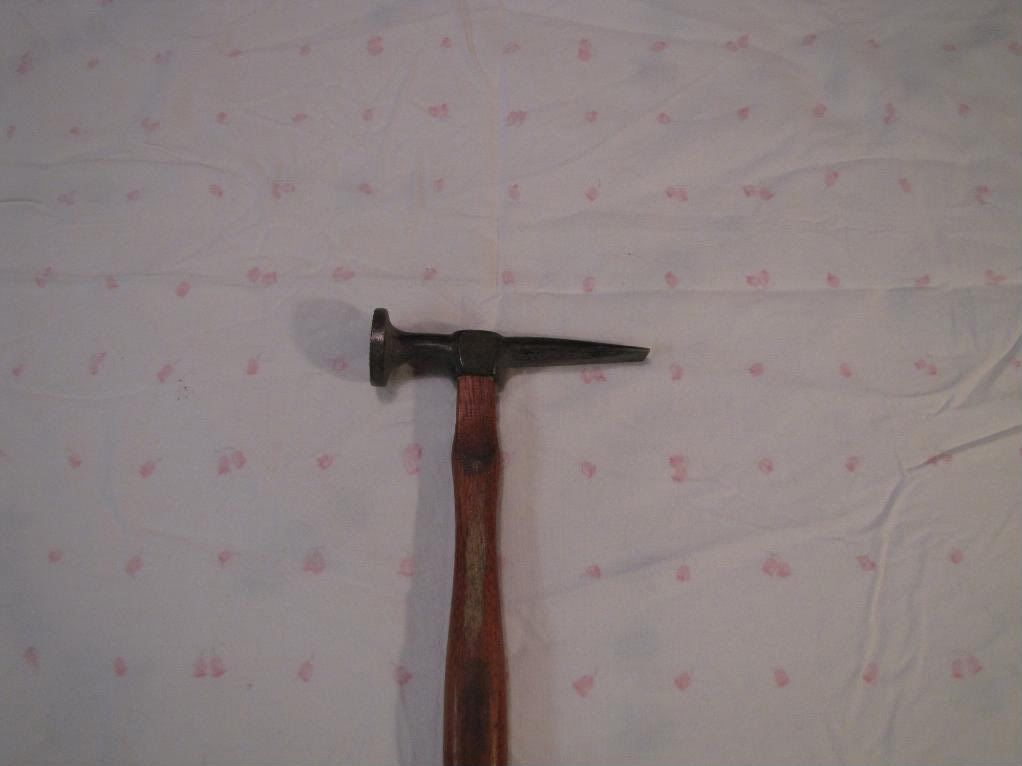 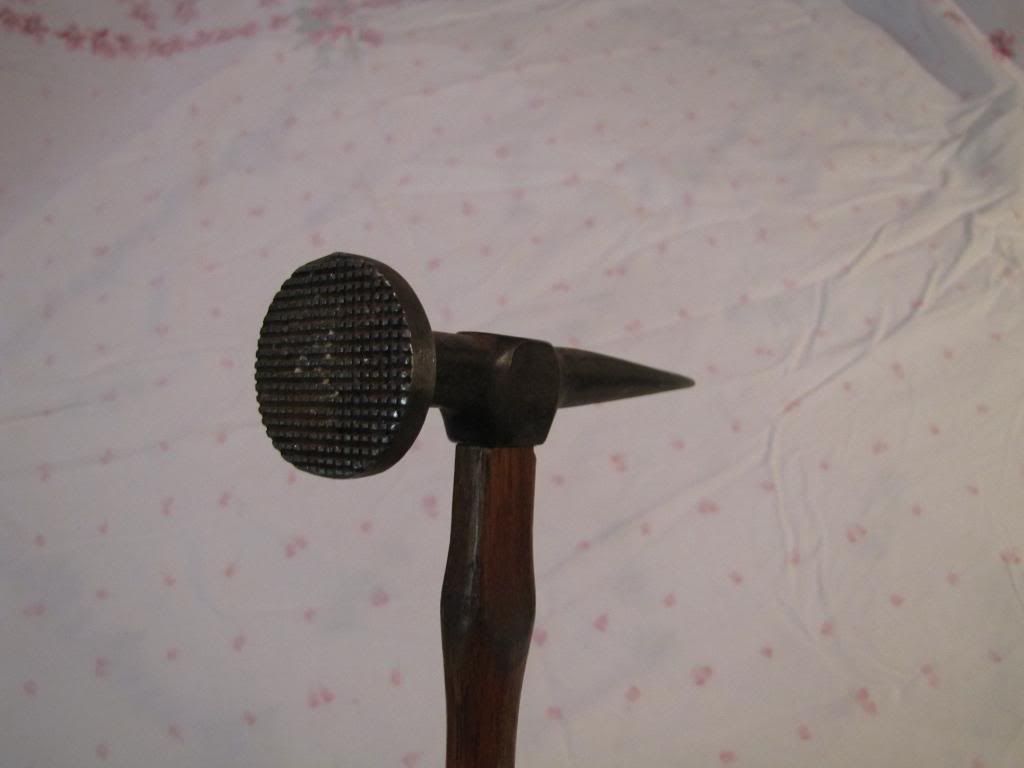 Some what of a unique shrinking hammer as both faces have serrations, typically one side is serrated and the other is smooth. Am guessing the hammer is a Herbrand because it looks just like the BF-2 I have and the same exact size. 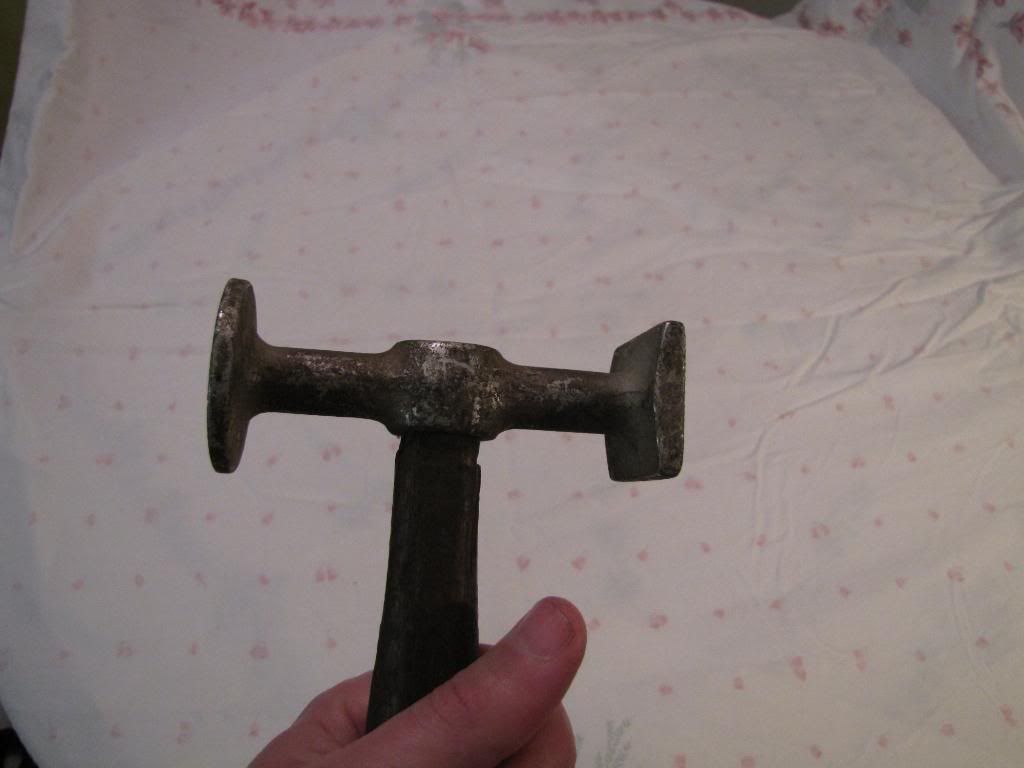 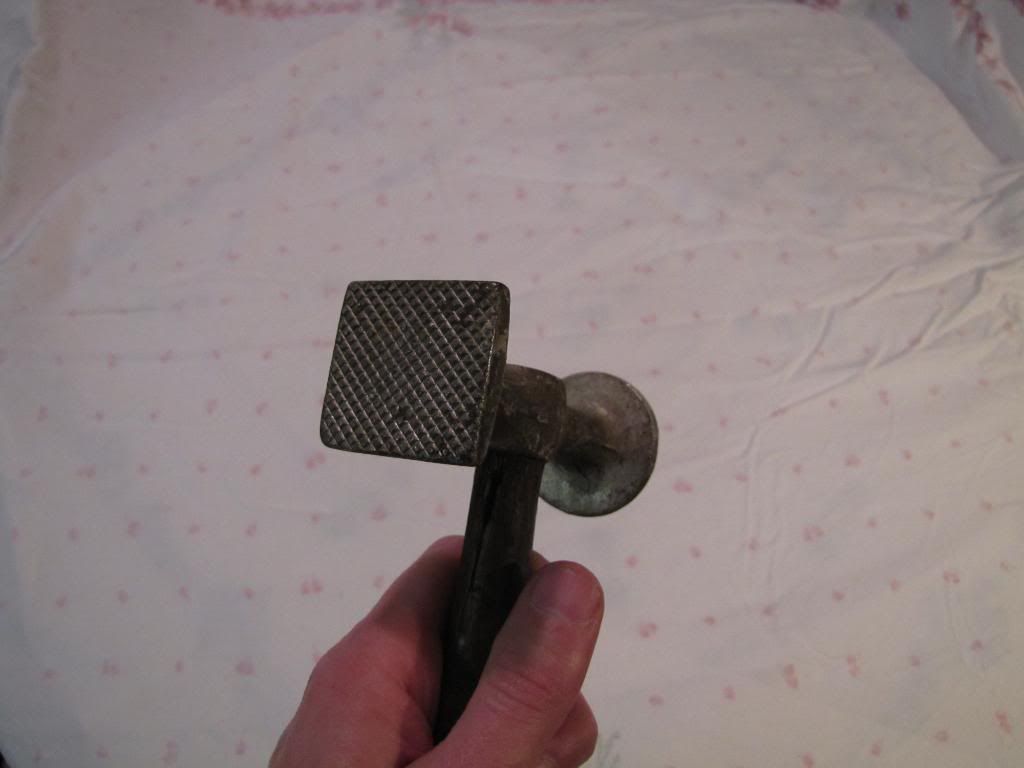 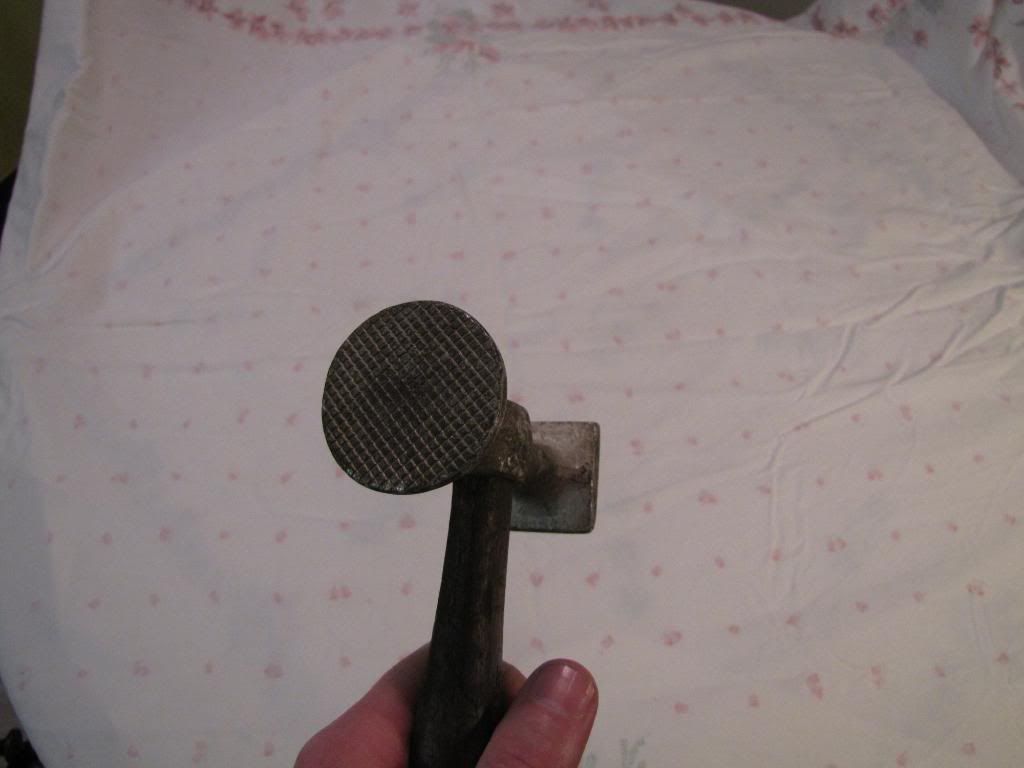
__________________
Currently working on How To Videos and custom metal 70 Chevelle gettin Sliced and Diced Anything But STOCK 70 Chevelle SS455 not a typo its a BUICK BABY 49 and 72 Chevy Trucks restored to original...close to it Drommer Stor....Norwegian for Dream Big http://s969.photobucket.com/albums/a...lle/?start=all https://www.flickr.com/photos/47922830@N03/ Pictures of my work and projects |
|
|

|
|
|
#3 |
|
Lost amongst the CORN
Join Date: Nov 2002
Location: Northern Iowa
Posts: 1,072
|
Re: What's hiding in the tool box part two
Herbrand BF-2 on the left and double ended shrinking hammer on the right. The overall style of the hammer head and the faces being the same sizes tells me this hammer is a Herbrand. Unfortunately, my Herbrand catalog from 1939 doesnít list this mystery hammer.
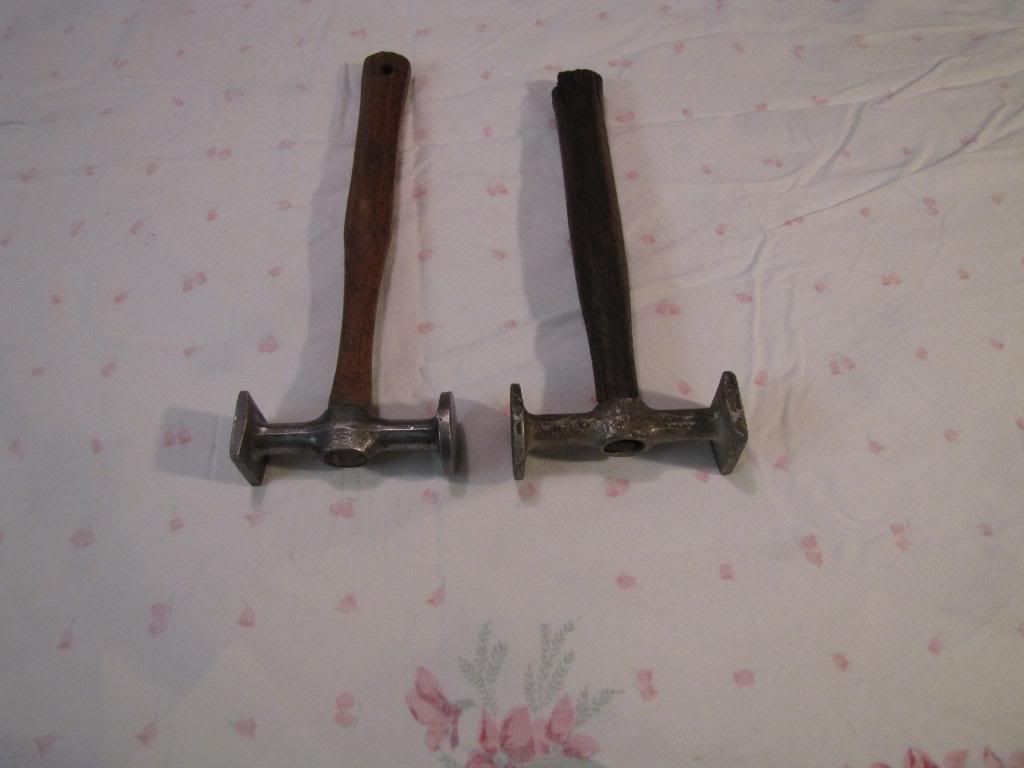 Herbrand BF-8 dinging hammer. Herbrand tools are somewhat hard to find but very nice tools, this hammer is extremely well balanced. The larger face is flat, the smaller face has a slight curve. The purpose of the large face is for bumping ON dolly and the small often high crowned face is for OFF dolly bumping. 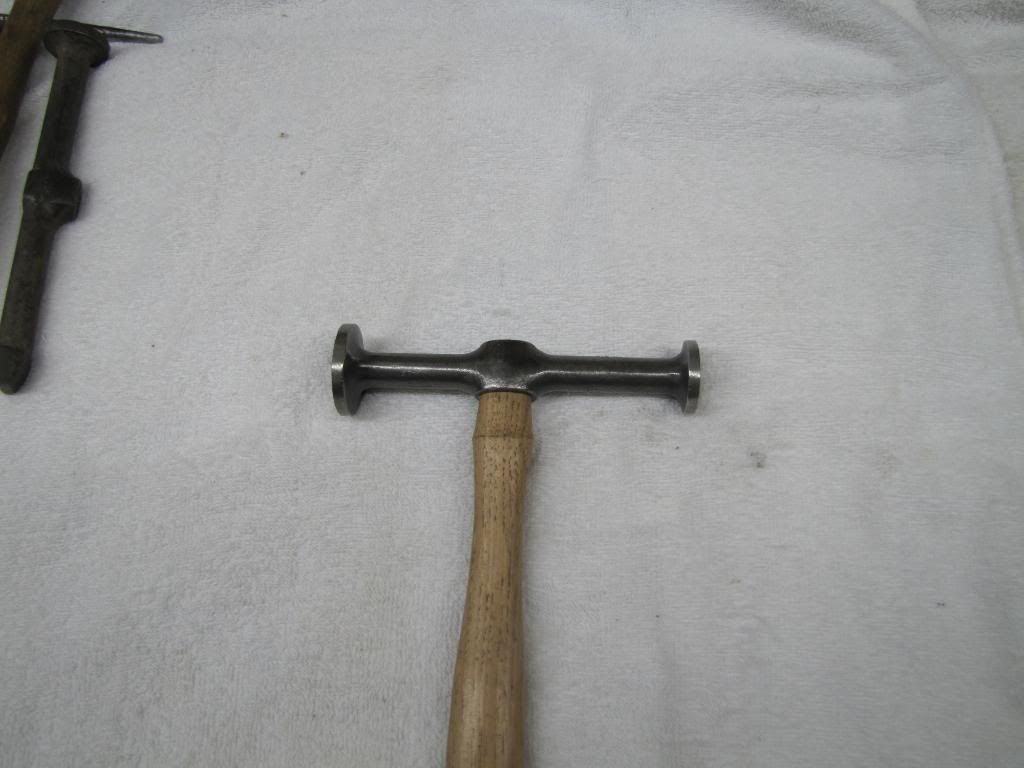 Herbrand BF-11 dinging hammer, pretty close to the BF-8 hammer, differences are the BF-11 has slightly larger faces but not as long as the BF-8. 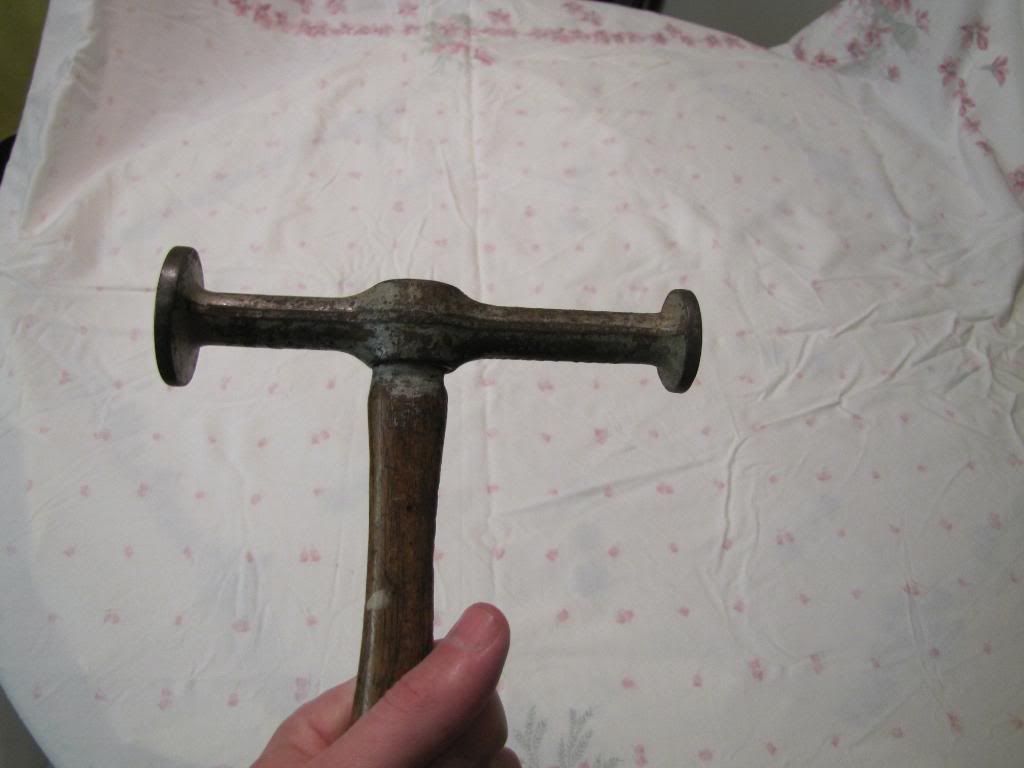 A very early Fairmount 167-G hammer, the early Fairmount hammers were stamped Cleveland below Fairmount. Later hammers just say Fairmount. I have an old book dating back to 1948 which was produced by Fairmount tools to basically showcase their tools and this hammer is not in the book. So am willing to guess this hammer was discontinued prior to 1948. Fairmount started producing body tools in the 1920ís. 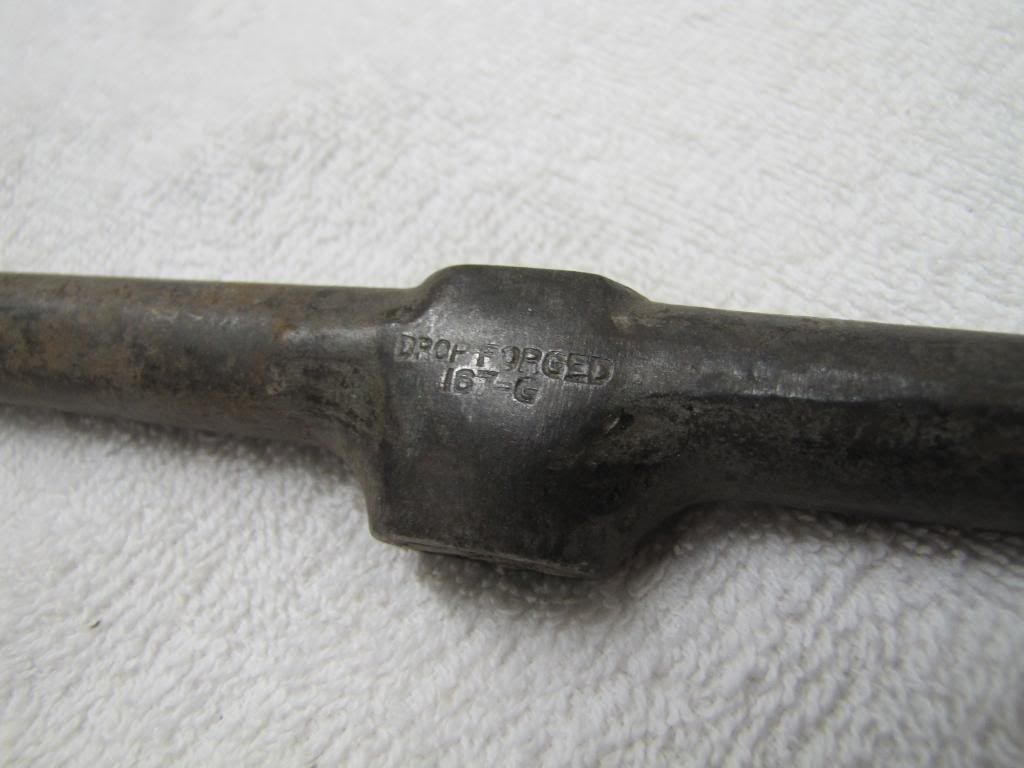 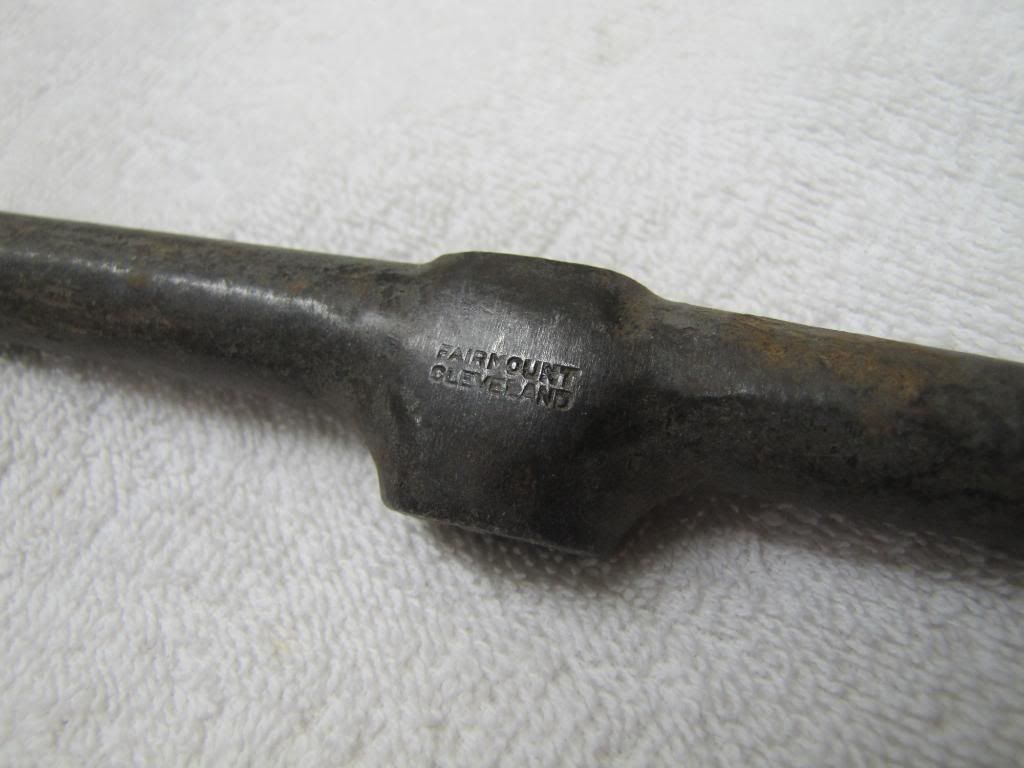 Comparing the old Fairmount167-G to the new Martin 168-G hammer. Basically the same style just longer and a smaller head, someday Iíll finally get a new handle installed. 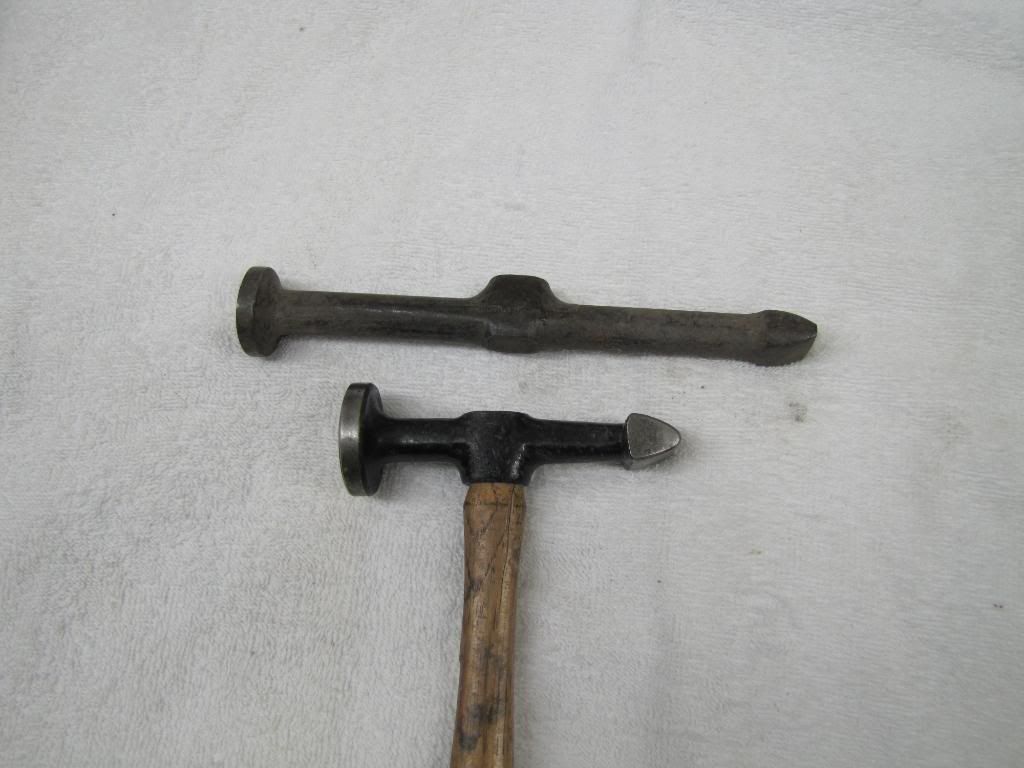 Plomb 1426 which has an unique barrel end. 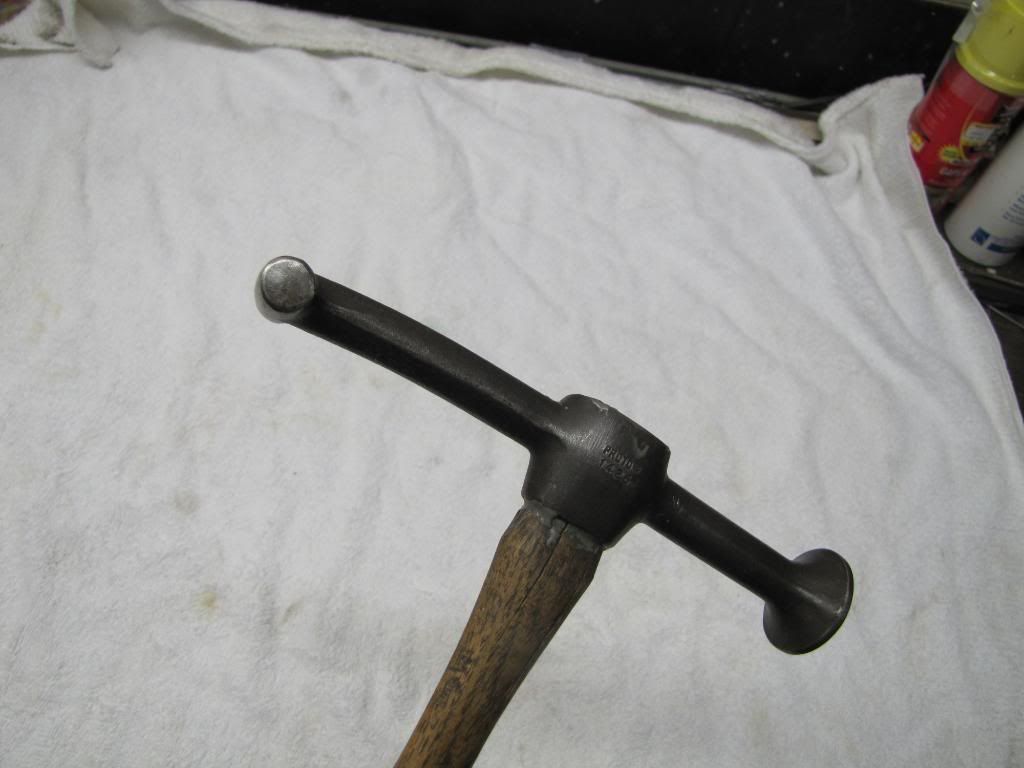 Porter Ferguson BF-5 chiseled dinging hammer. The squared off head is for working around body lines and ridges. A very nice hammer with a good feel and balance. 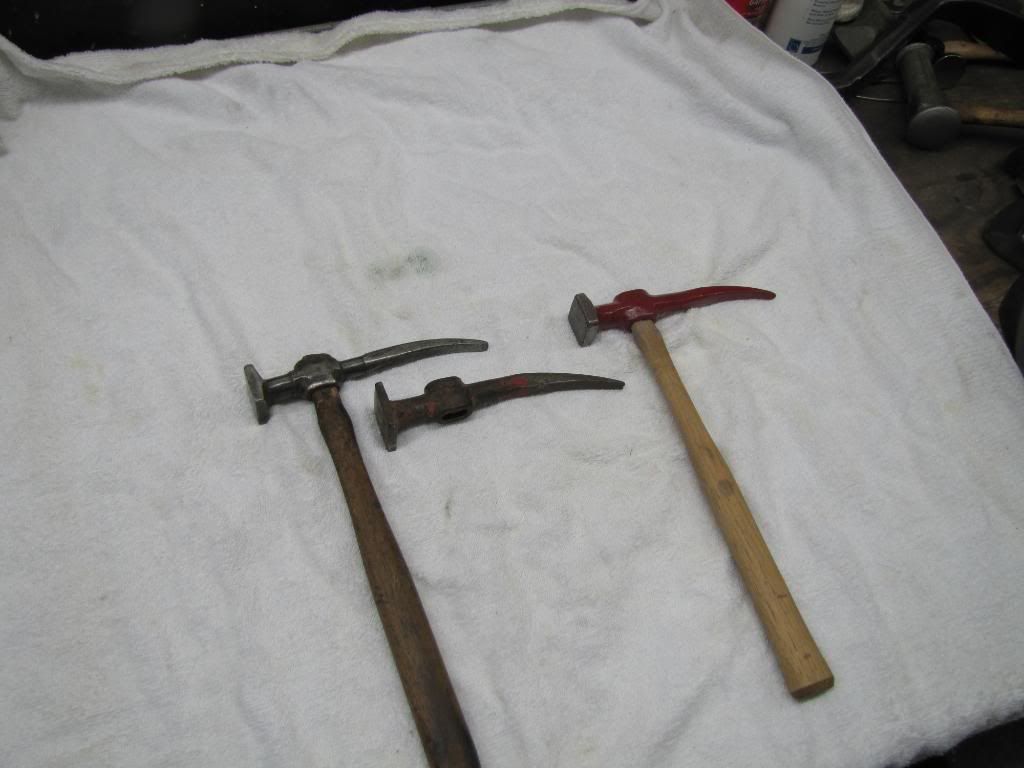 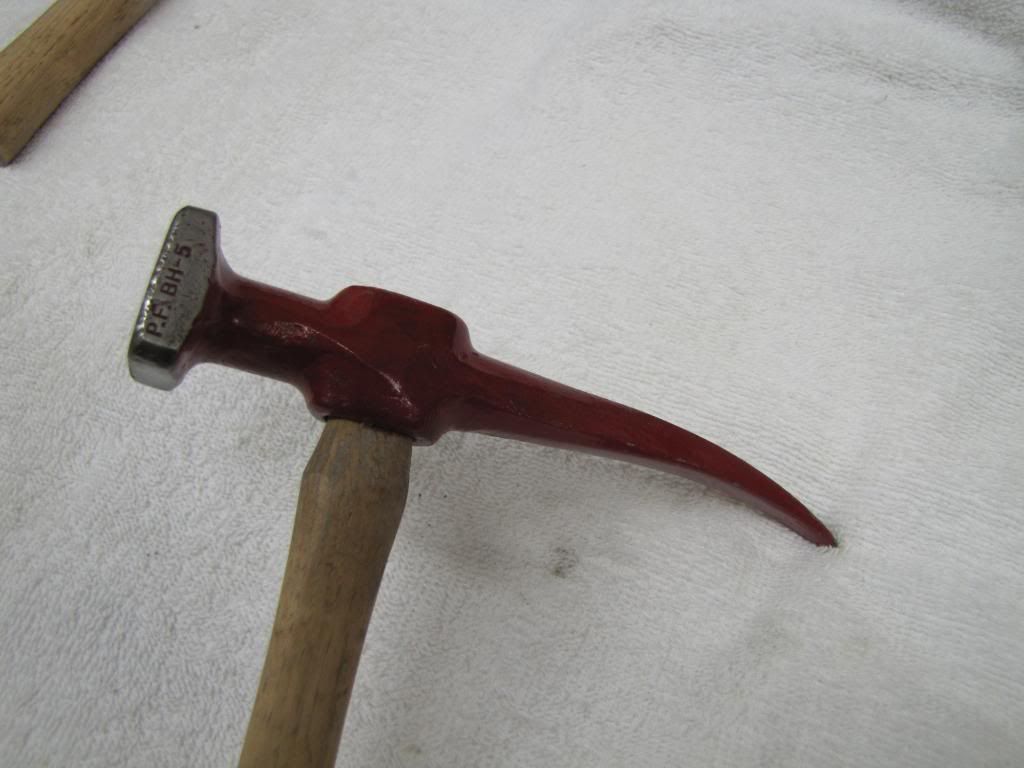 One thing to look for on old hammers is the working face. I can tell by the condition of the face the previous owner(s) did not have a clue on how to properly swing the hammer. All four edges are heavily chipped were the actual working face is mark free indicating improper angles and usage. 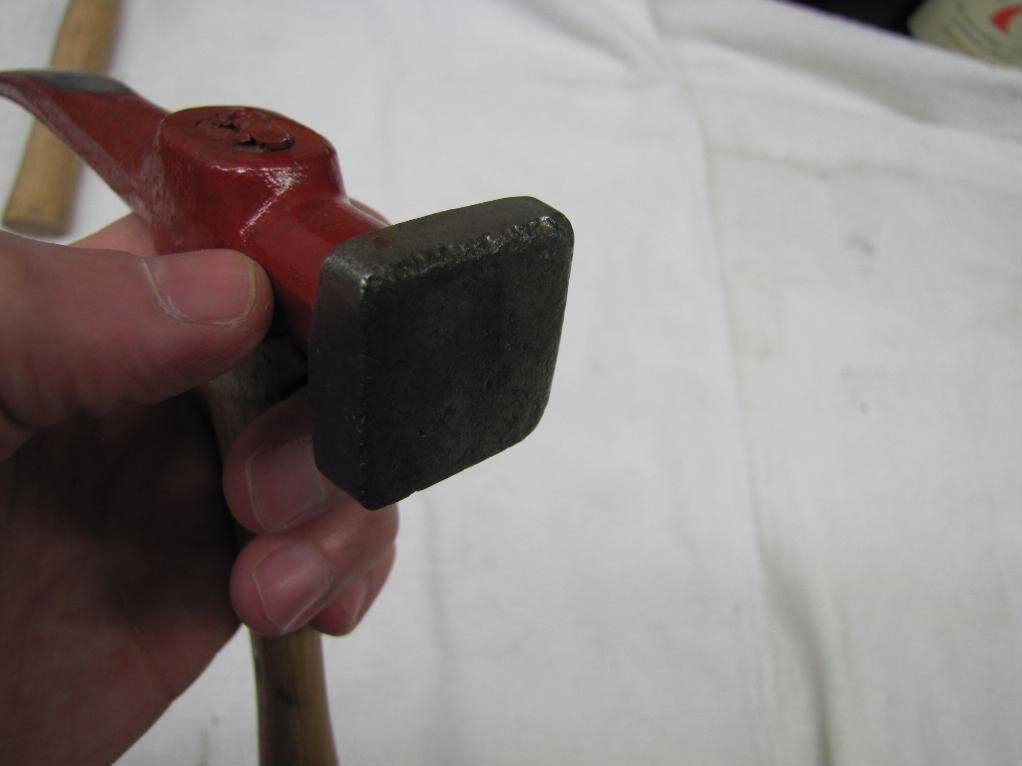 The P-F compared to my favorite hammer on top, Martin 153-GB.  Plomb 1428 light pick hammer. Lighter in weight then the Fairmount 164-G pick hammer. Light pick hammers have the dinging hammer style but have a pick end on the one end for raising small low spots. Light pick hammers are often called finishing hammers because the light weight was used during the final stages of metal finishing.  A Proto 1427 chiseled hammer, easily one of the most sought after hammers ever produced. As a refresher, Proto started out as Plomb then later changed their name to Proto in the mid 50ís after being sued. 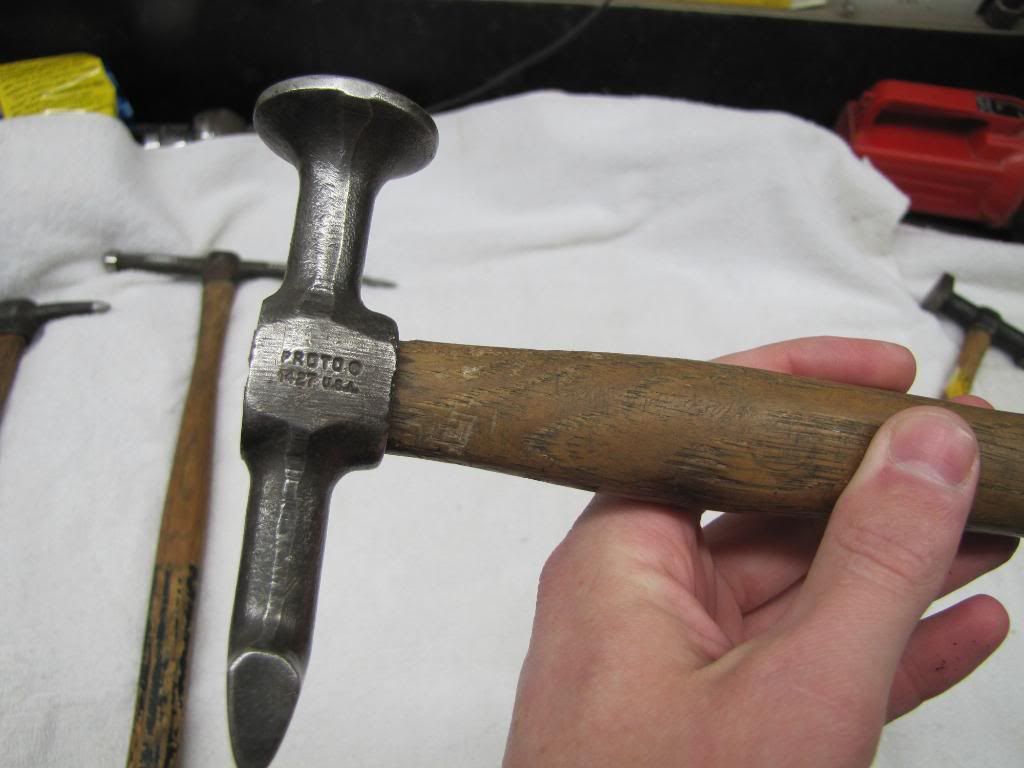 Safety first! 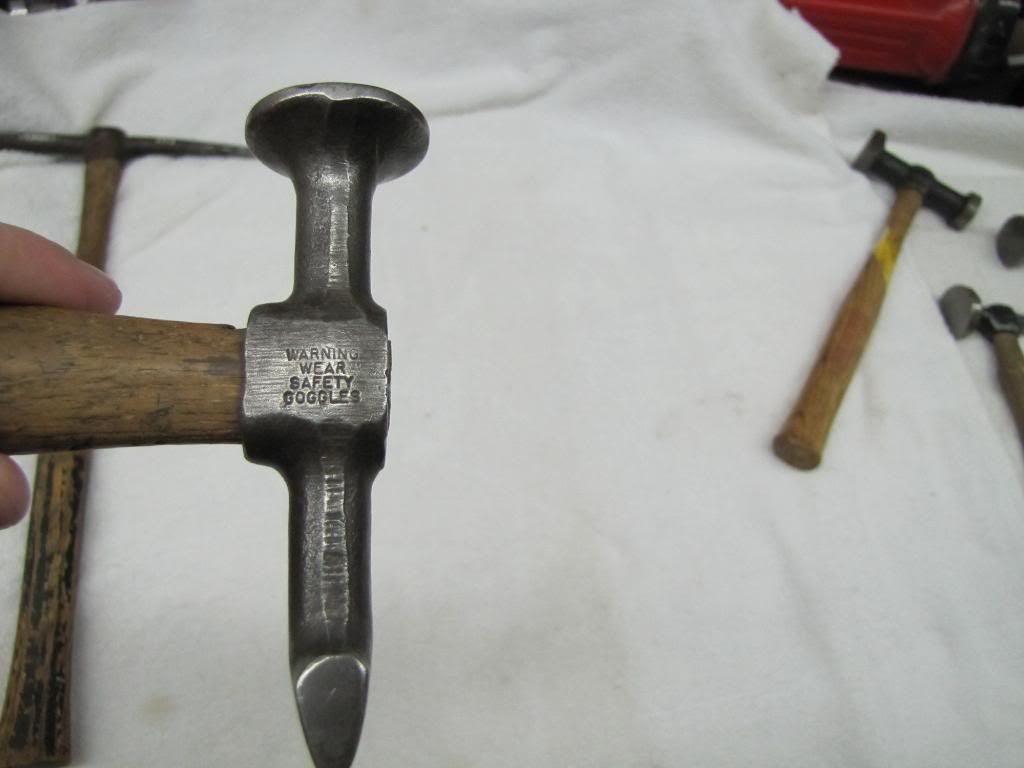 The newer Proto 1427 on the left and an older Plomb 1427 on the right. I donít know if Proto changed the design at some point but the newer Proto has a high crowned face compared to the flat face of the Plomb. Neither hammer appears to be altered. A high crown face is designed for usage on buckles or ridges because the contact area is smaller and actually works better then a flat face hammer at leveling springy or metal under tension. 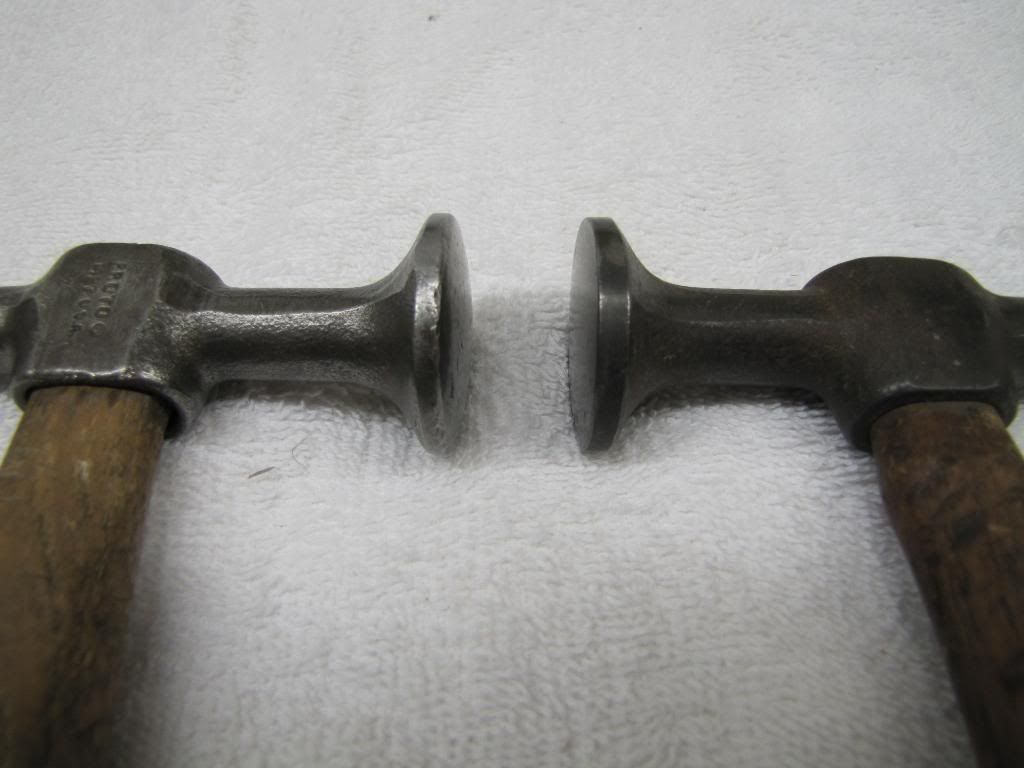 The hammer on the right is the Plomb with the original green painted handle. The Proto has an incorrect length handle and will be getting a correct length handle installed. For reference, most body hammers use a 13 inch handle. Dagger Tools sells a 13 inch flat sided handle much like the original Plomb/Proto handle. Proto handles are octagonal in shape versus being oval shaped. 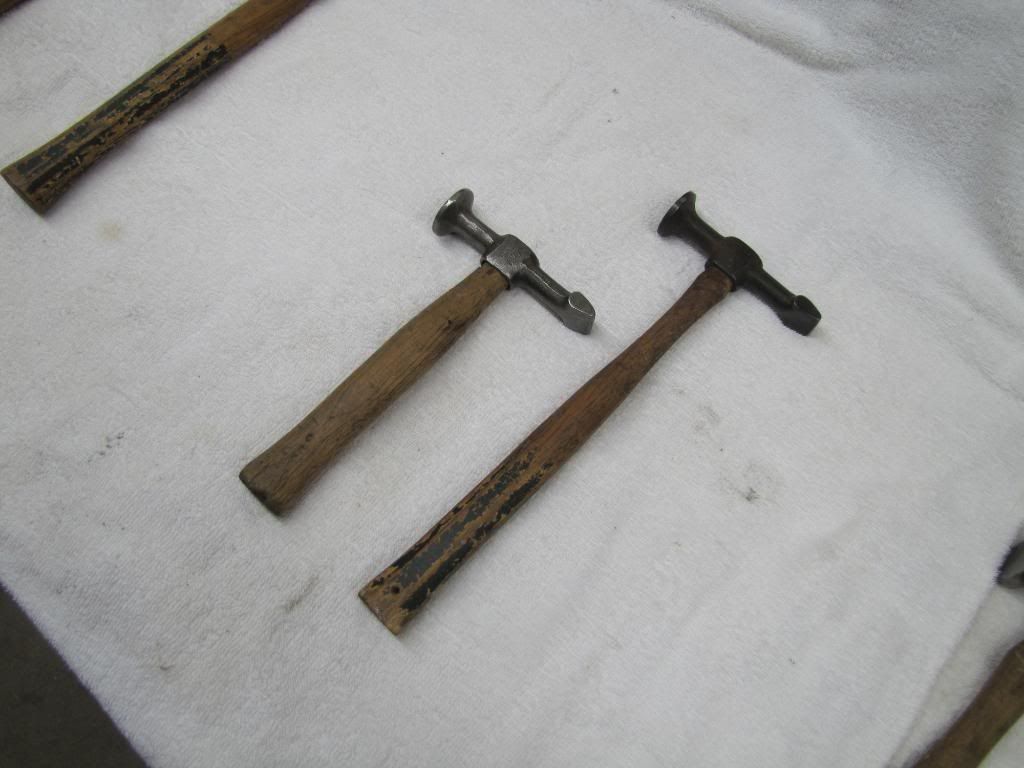
__________________
Currently working on How To Videos and custom metal 70 Chevelle gettin Sliced and Diced Anything But STOCK 70 Chevelle SS455 not a typo its a BUICK BABY 49 and 72 Chevy Trucks restored to original...close to it Drommer Stor....Norwegian for Dream Big http://s969.photobucket.com/albums/a...lle/?start=all https://www.flickr.com/photos/47922830@N03/ Pictures of my work and projects |
|
|

|
|
|
#4 |
|
Lost amongst the CORN
Join Date: Nov 2002
Location: Northern Iowa
Posts: 1,072
|
Re: What's hiding in the tool box part two
Another odd unique hammer purposely built for an era long gone. This Plomb 1429 is known as a turret hammer. The term turret came about around 1936 when Chevrolet revolutionized the industry with one of the first all metal turret or roof tops. The purpose of the hammer is to bump up low spots in the middle of the roof. The extra long hammer head and handle allow the repair man to reach the damage in the middle without strain.
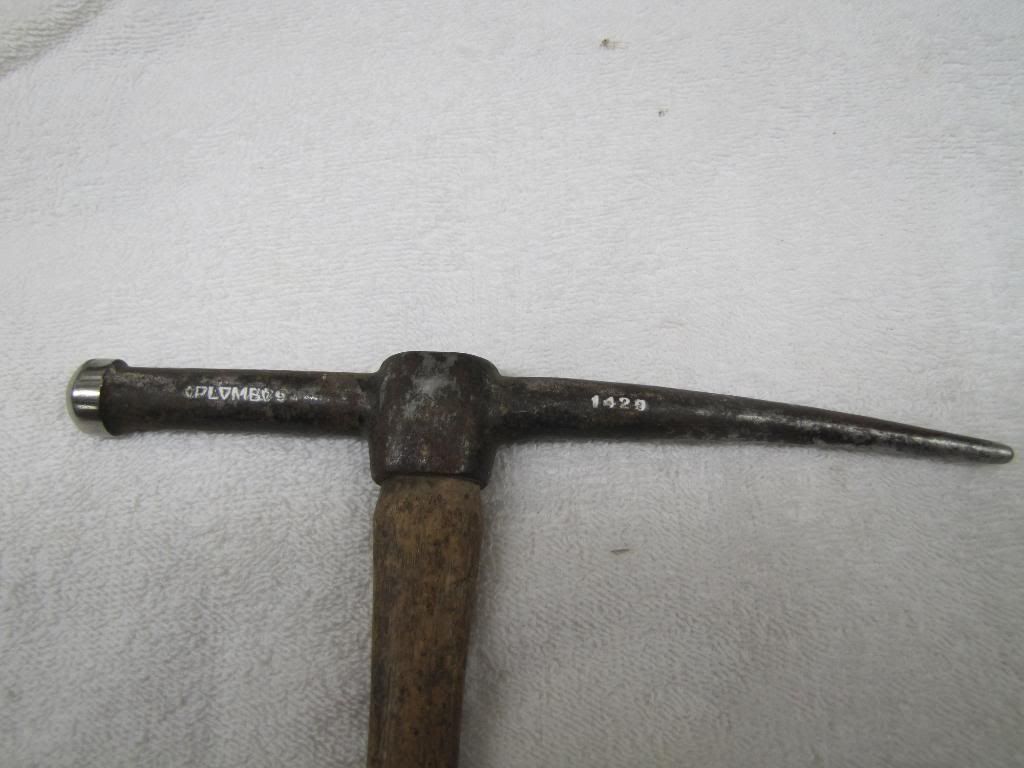 A regular hammer compared the Plomb 1429 turret hammer. The design makes the hammer solely a pick hammer. The pointed end is used to pick up very small spots were the larger ball end is used to bring up larger spots of metal.  Plomb 1424 light weight dinging hammer. Plomb made a very similar hammer the 1425 but was the heavier bumping hammer style. 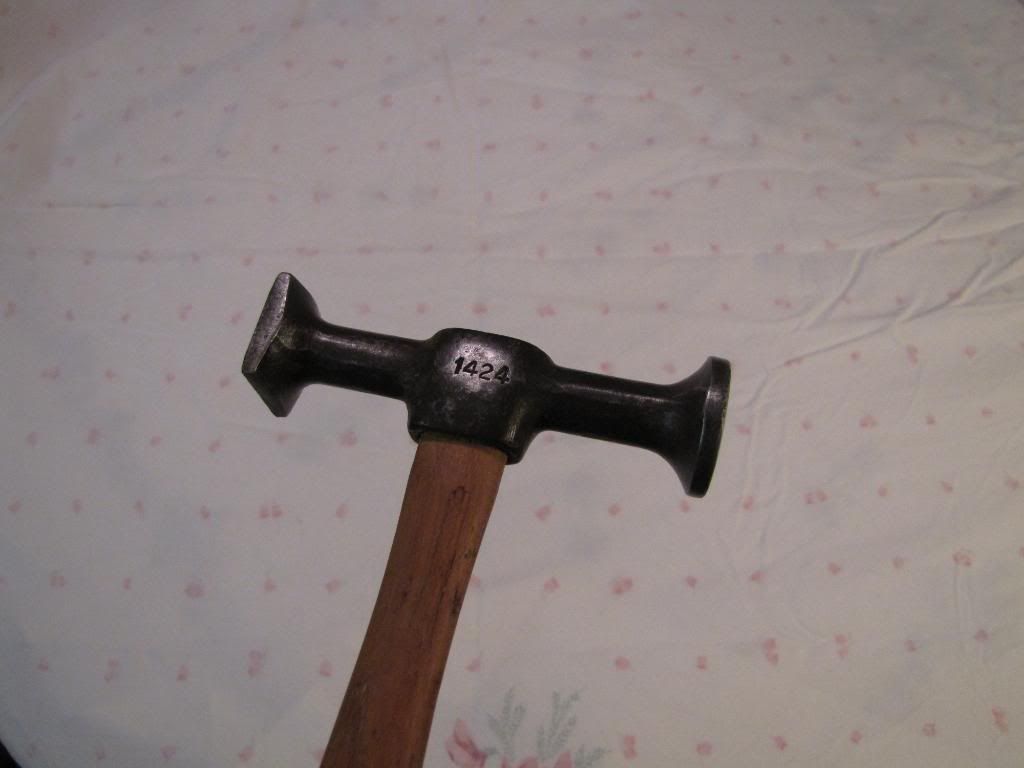 The 1424 hammer is extremely light and small in size probably the smallest hammer in my collection. As I said before the real light weight hammers were finishing hammers because you had a greater degree of control. 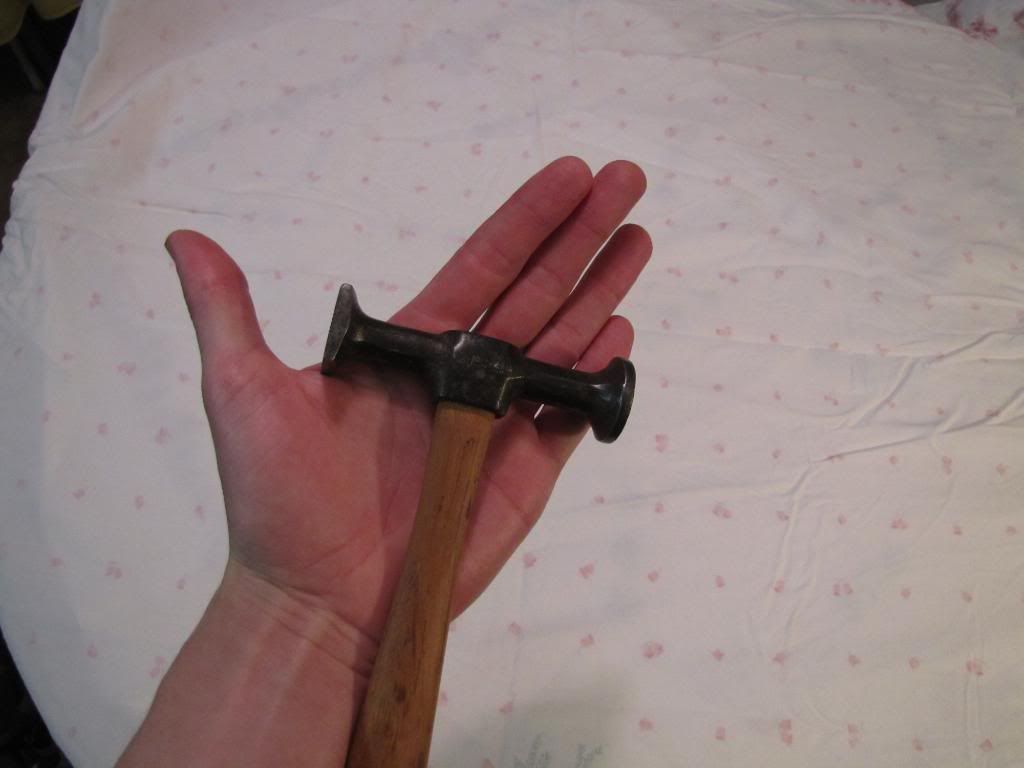 Proto 1421 dinging hammer. 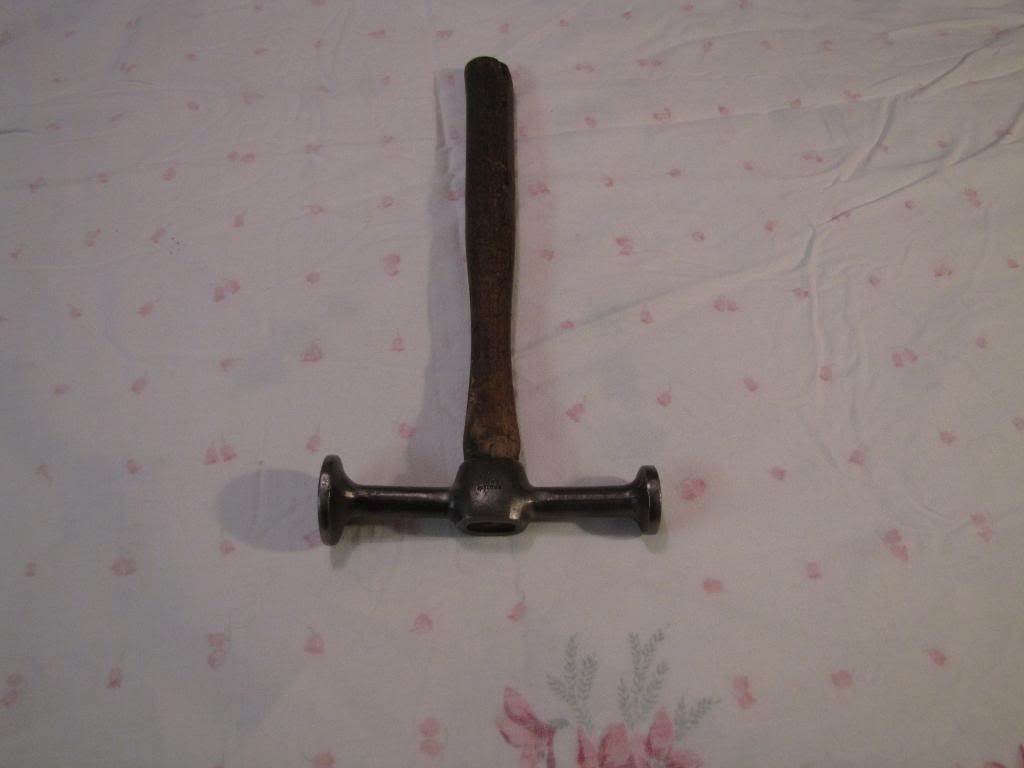 Proto 1421 on top compared to the Plomb 1424 on the bottom. 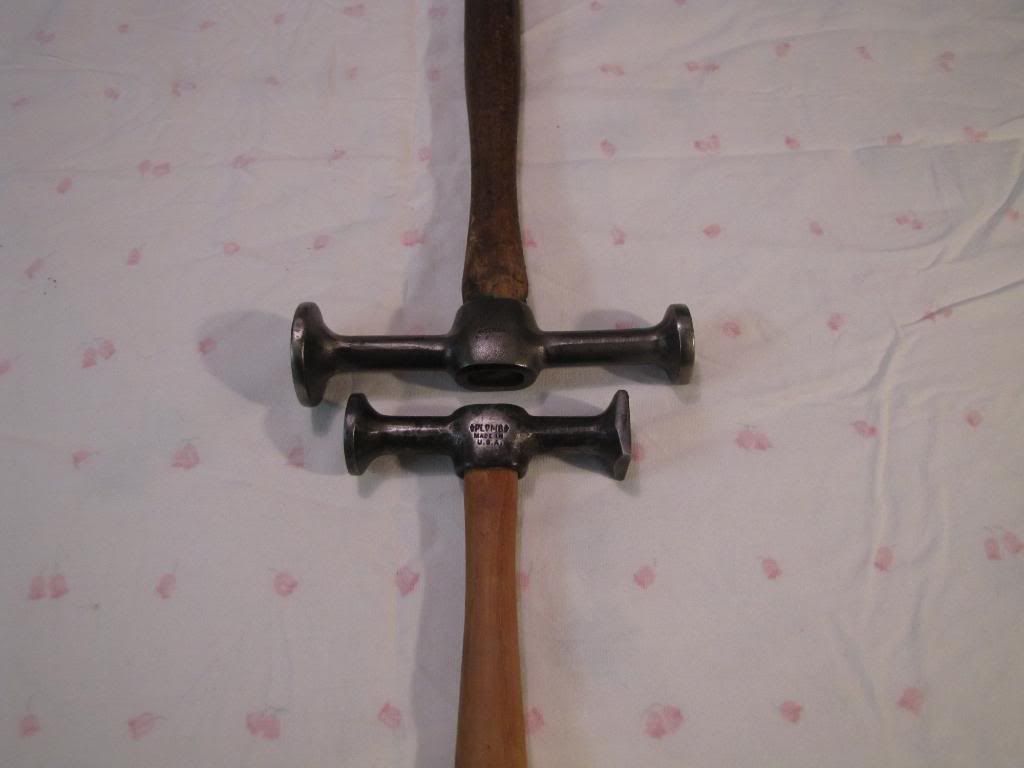
__________________
Currently working on How To Videos and custom metal 70 Chevelle gettin Sliced and Diced Anything But STOCK 70 Chevelle SS455 not a typo its a BUICK BABY 49 and 72 Chevy Trucks restored to original...close to it Drommer Stor....Norwegian for Dream Big http://s969.photobucket.com/albums/a...lle/?start=all https://www.flickr.com/photos/47922830@N03/ Pictures of my work and projects Last edited by sevt_chevelle; 04-03-2011 at 06:05 PM. |
|
|

|
|
|
#5 |
|
Lost amongst the CORN
Join Date: Nov 2002
Location: Northern Iowa
Posts: 1,072
|
Re: What's hiding in the tool box part two
There is a very odd Craftsman hammer which would be a roughing or a fender hammer. Craftsman never made their own body repair tools, they simply commissioned other companies and re-labeled them as Craftsman. Craftsman first used Steamline for their body tools. If you find a Craftsman hammer with blue paint chances are it is actually a relabeled Streamline and a good quality hammer. My Craftsman tool catalog from 1941 lists this hammer as the 4575.
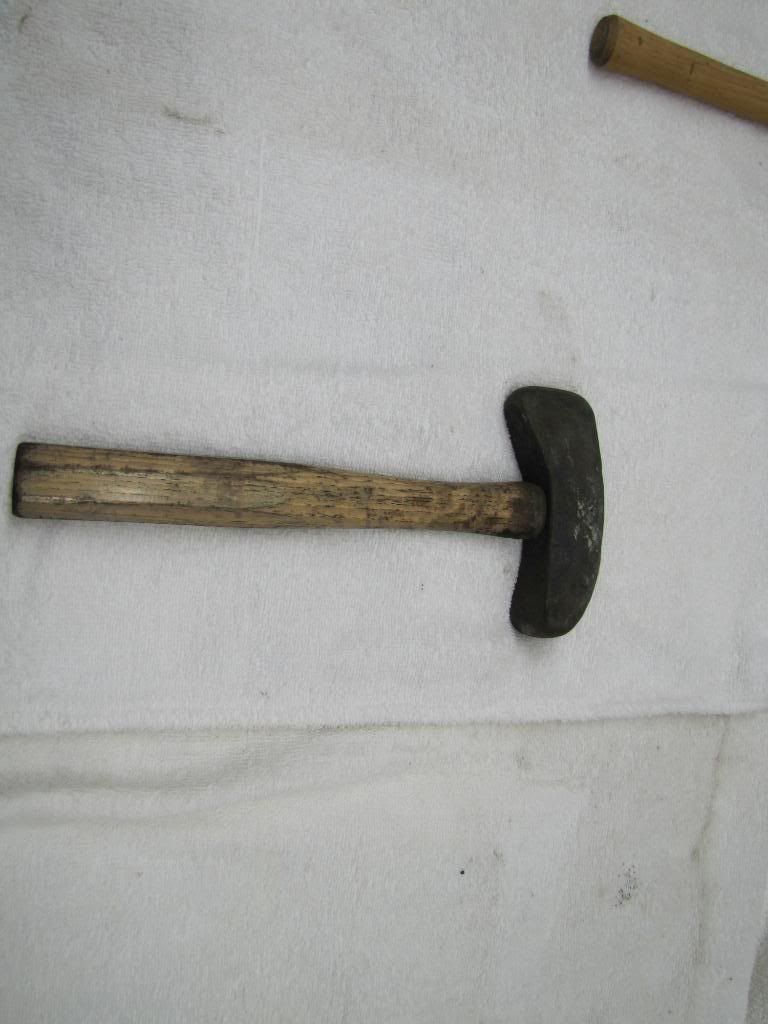 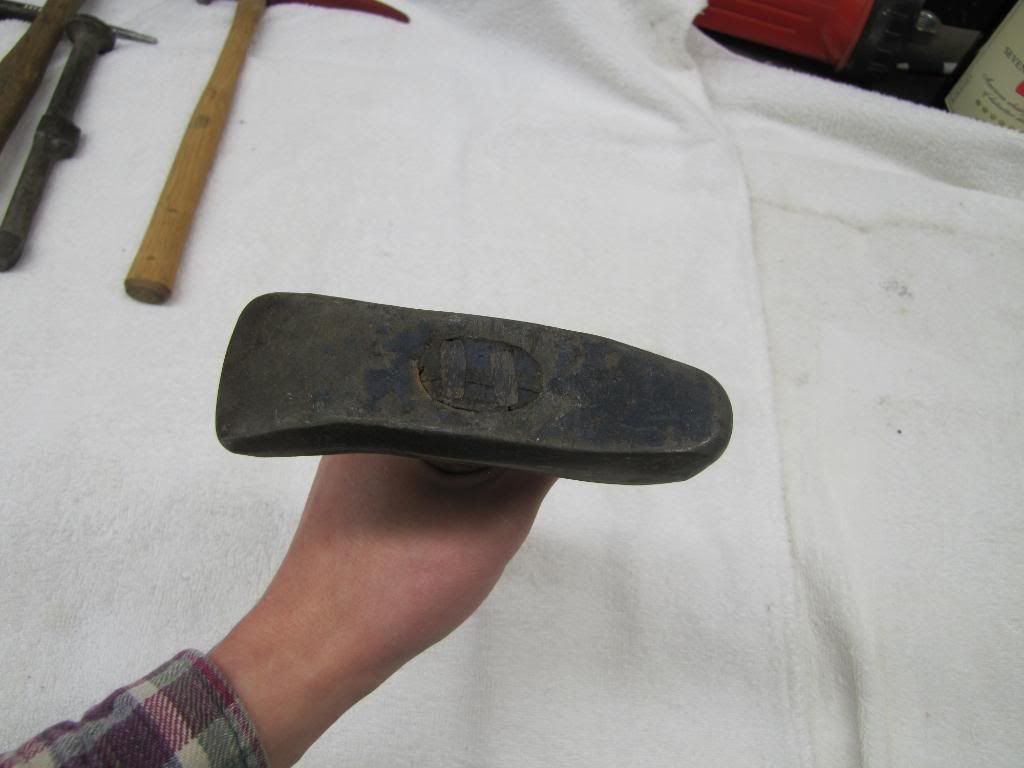 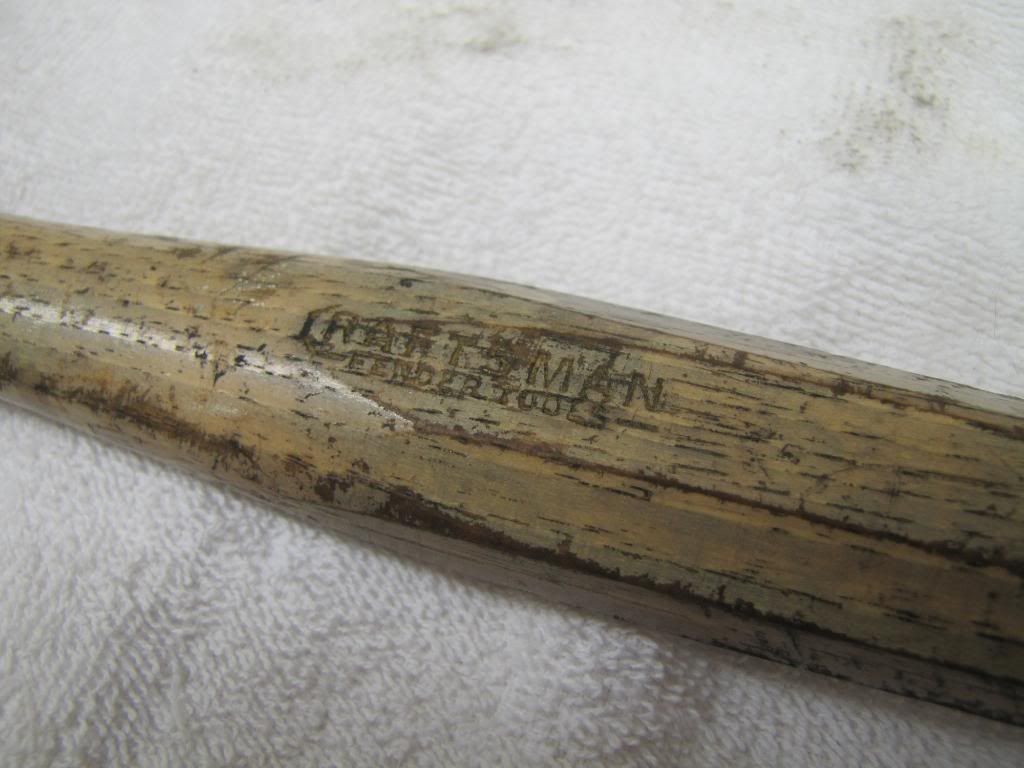 Large fender hammer used for roughing out damage quickly. Made by Streamline donít know the number. The design allows you to remove dents without removing the tire and also be used as a caulking tool, meaning you strike the hammer head with another object much like a chisel.  Streamline on the left compared to the Plomb 1416 on the right. Different hammer profiles so you got to have them both. 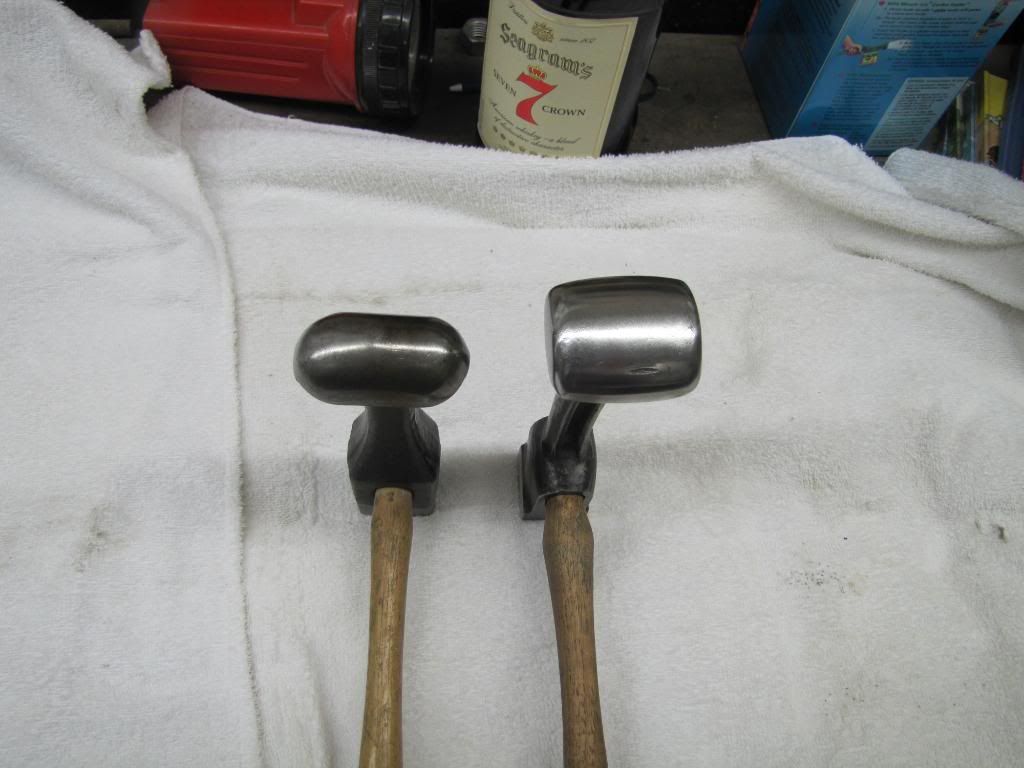 Since this photo was taken I added another 1416 to the collection for a total of 3 Plomb 1416 hammers, just canít say no to old cool tools. 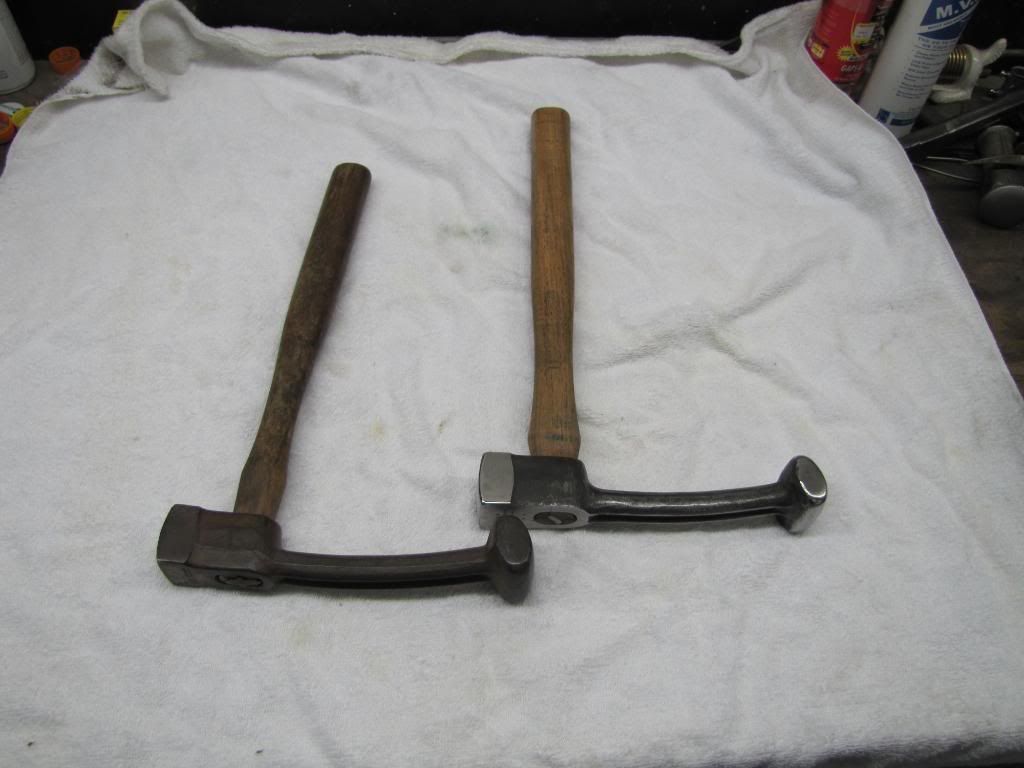 Stanley 597 fender hammer another large heavy hammer for roughing out deep dents. 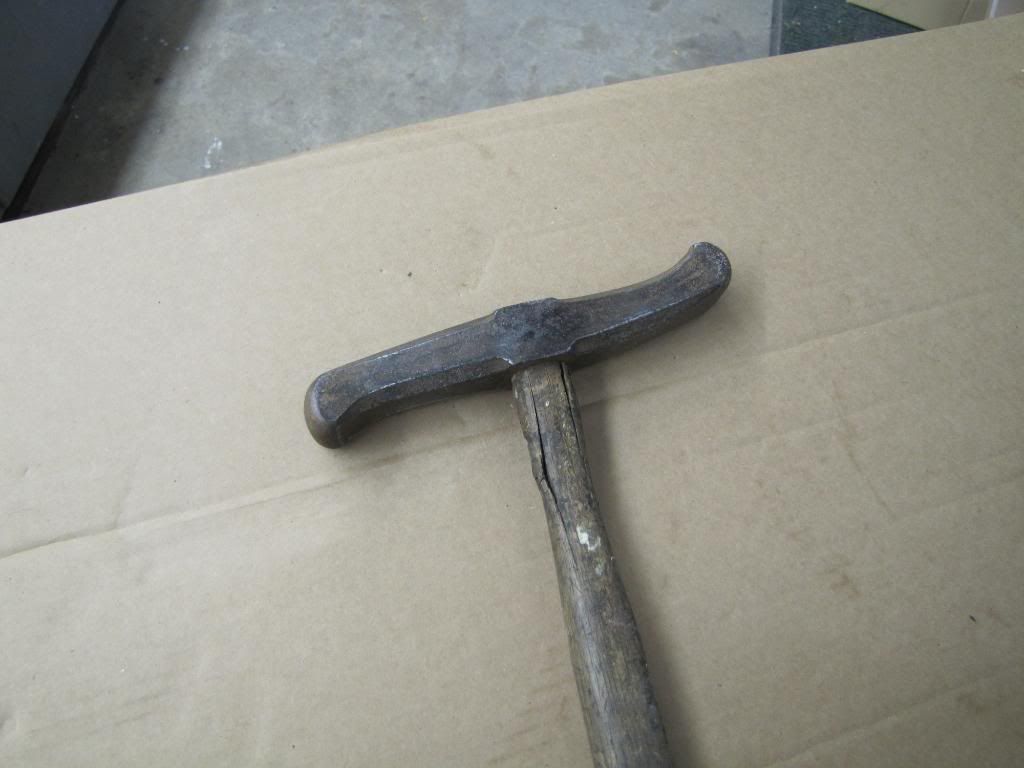 Plomb 1416 on left and Fairmount 155 on the right. Similar in design but the Fairmount is smaller in size. I use the Fairmount hammer quite often, the fender hammer style is very handy. 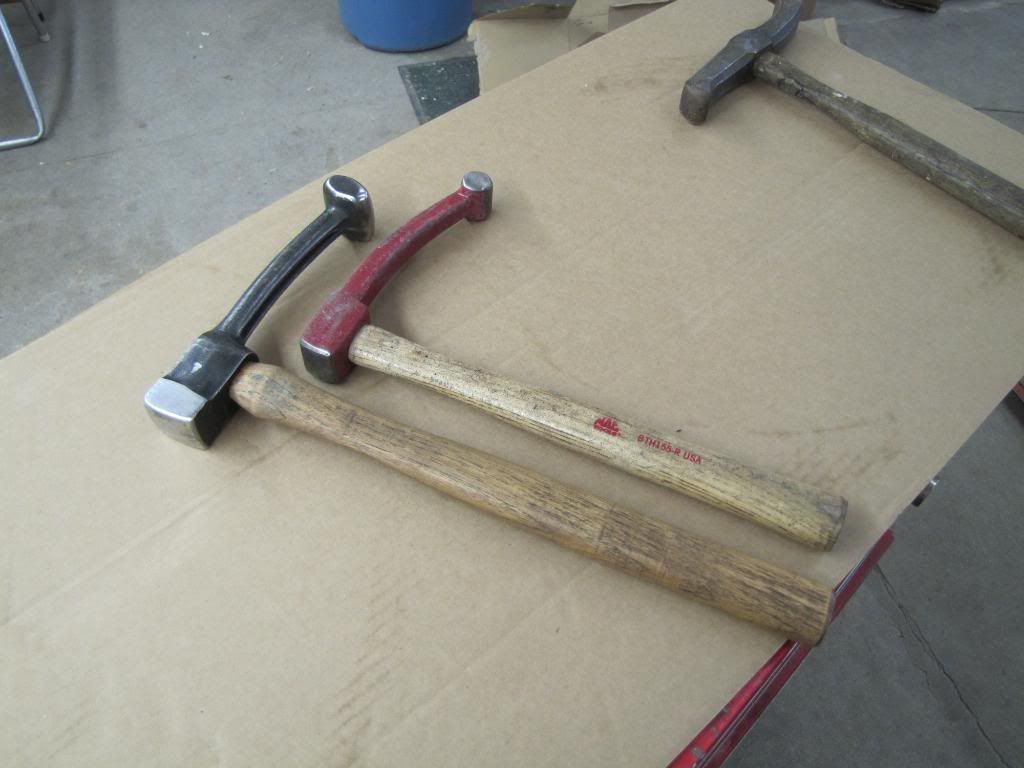 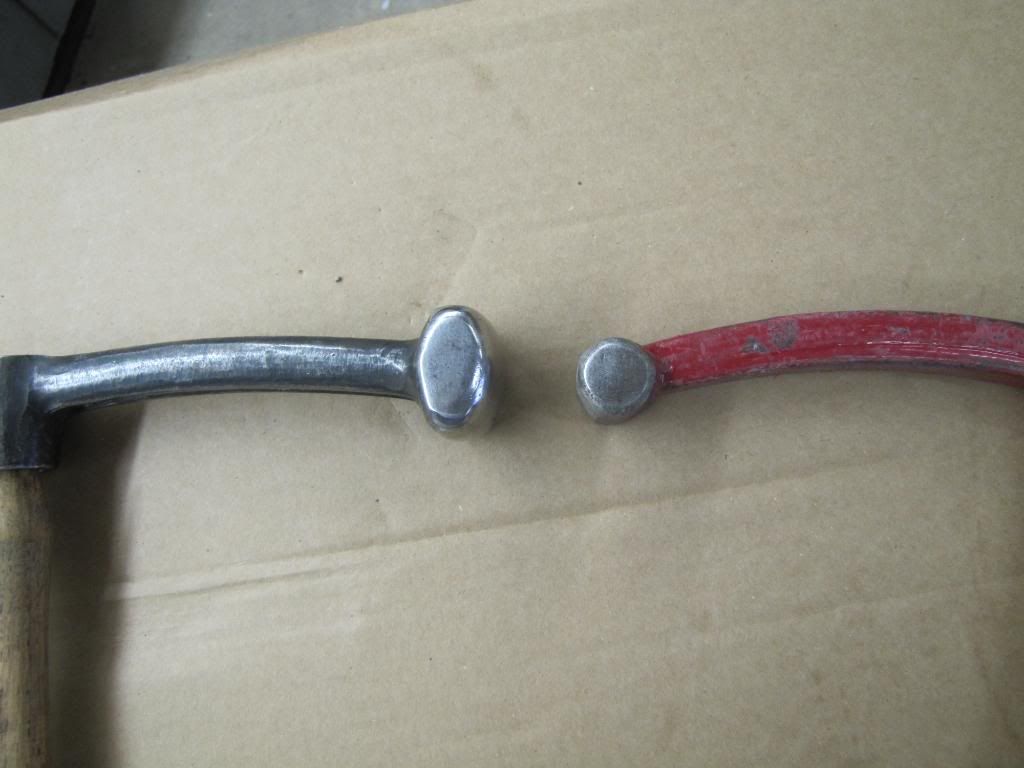 Heller fender hammer on the left compared to the Plomb 1416 on the right. Pretty darn close in design, the Heller has a larger striking head. 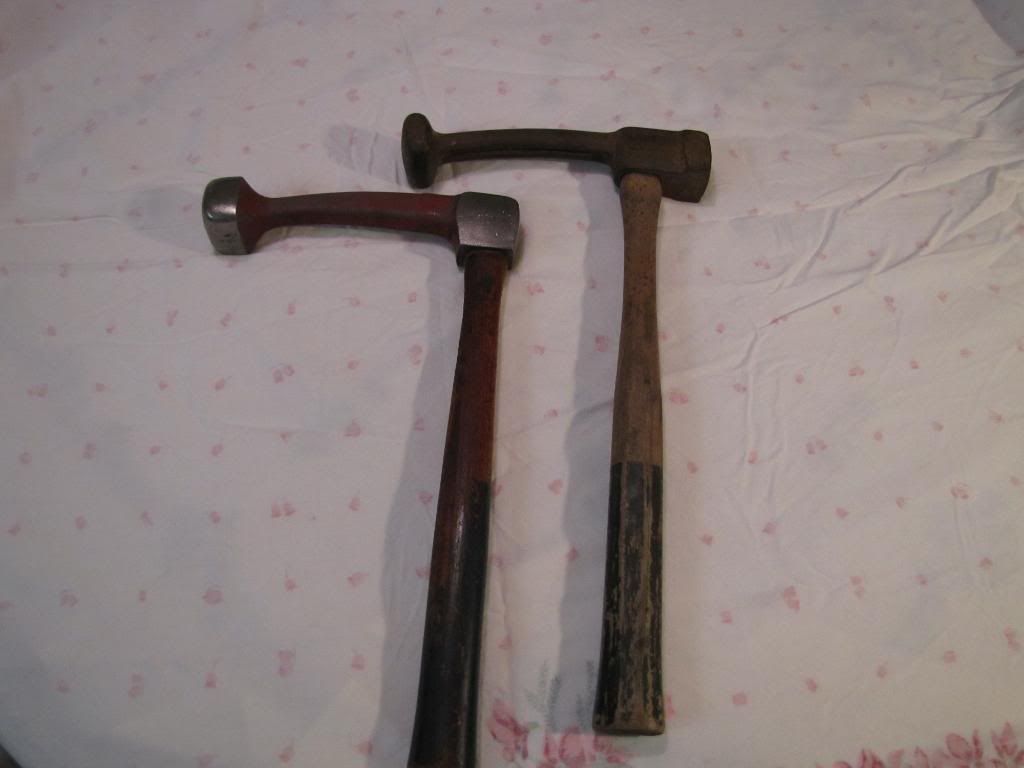 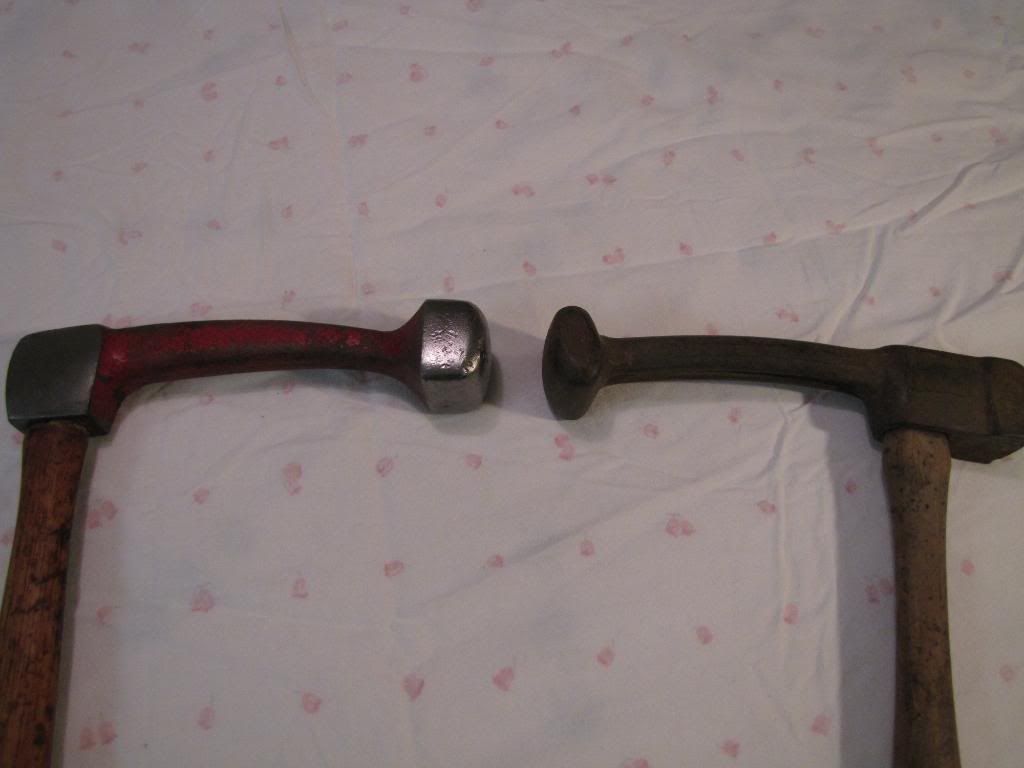 Some might be asking, hey whereís the Porter Ferguson fender hammer all I see is Craftsman, Streamline, Heller, Stanley, Fairmount, and Plomb? Well wait no longer, the P-F fender hammer is the RH-10. The very early RH-10 had a round face compared to square face shown below and are extremely rare, Iíve yet to see one anywhere. As you can see P-F took a slightly different approach to the fender hammer design. The double head design makes this hammer easier to use because the weight is not offset to one side.  P-F hammer on the right compared to the Plomb 1416 fender hammer. Neither hammer is light weight both are bruisers, nice hammers to have when you need to do some serious metal bumping. 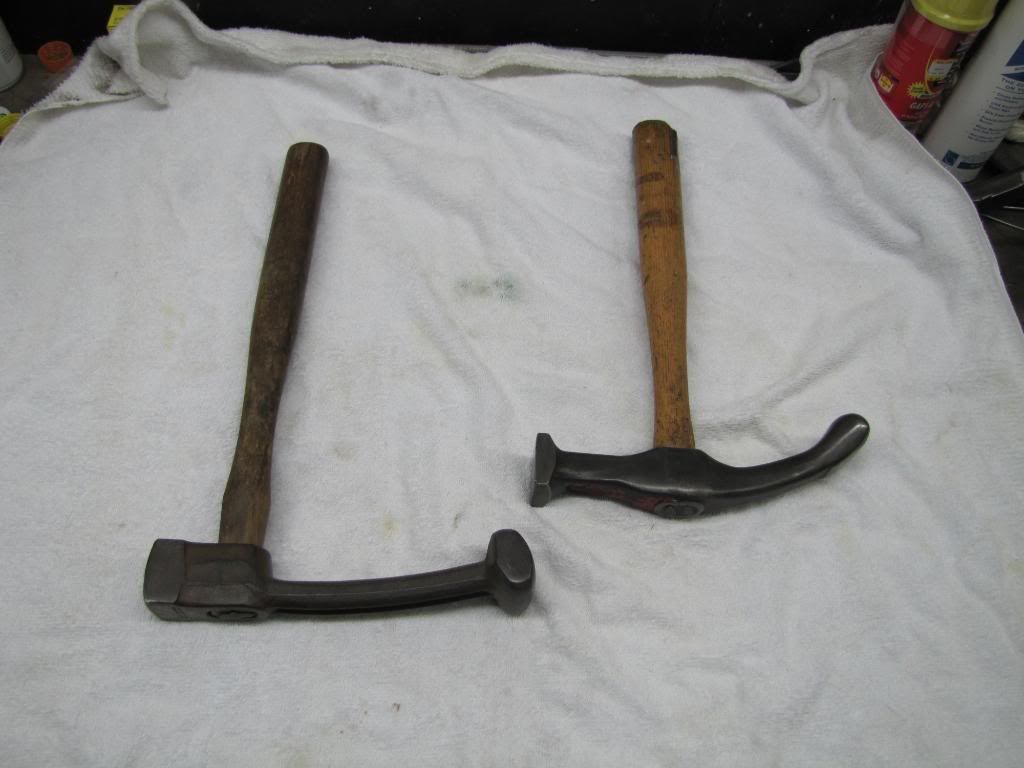 Pexto reveal hammers which have offset heads. Hard to find style of hammer as only a few companies made offset heads. The offset heads are capable of reaching irregular angles regular hammers canít reach. 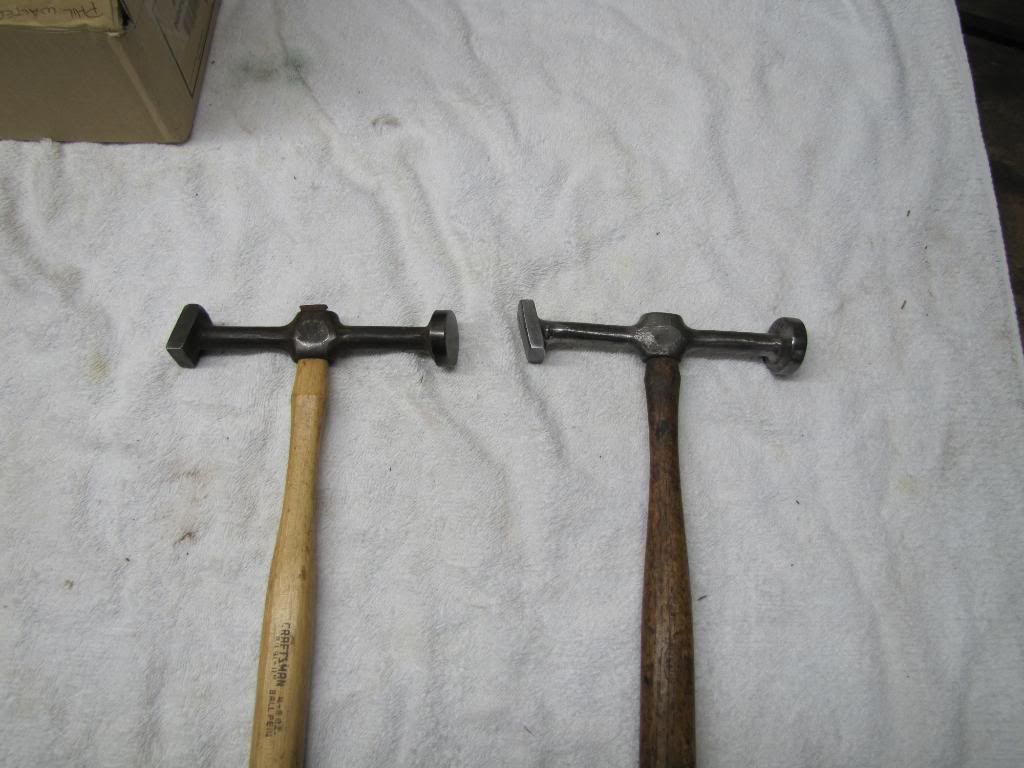 Notice how both faces are angled and not straight up and down like regular body hammers. 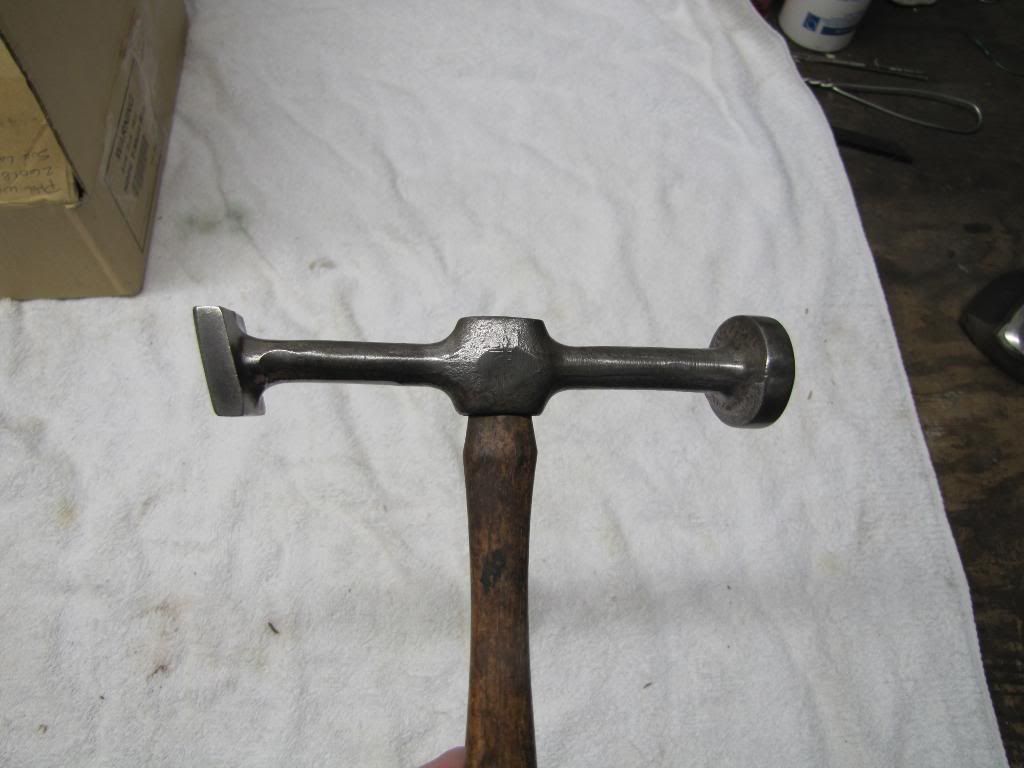 A different type of pick hammer, a pneumatic pick hammer. The major downfall to pick hammers is the lack of room often needed to properly swing the hammer from the backside to rise a low spot. The solution was a pneumatic pick hammer eliminating the need to swing a hammer, just squeeze the trigger and the pick extends out. I first saw ads for this tool in trade magazines dating back to the early 1950ís. To my knowledge only two companies built pneumatic pick hammers, the model shown is the Air Peck model. The other pneumatic pick hammer from Hoppy had an adjustable dial capable of changing the stroke of the pick. My pneumatic pick hammer has a fixed stroke. 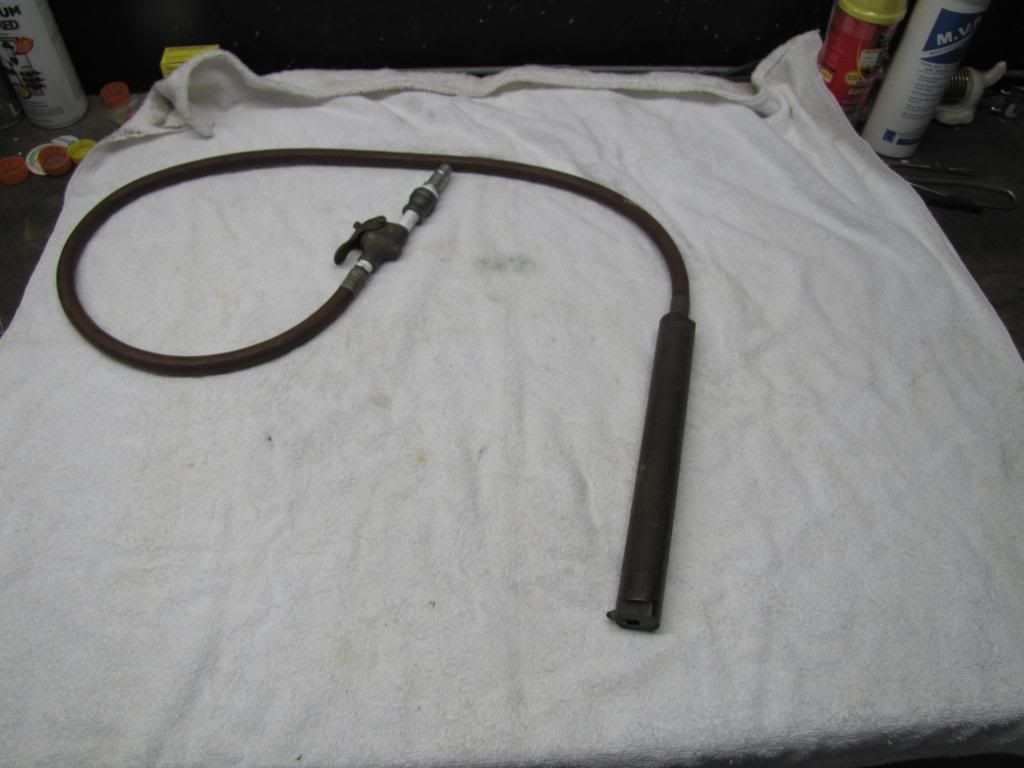 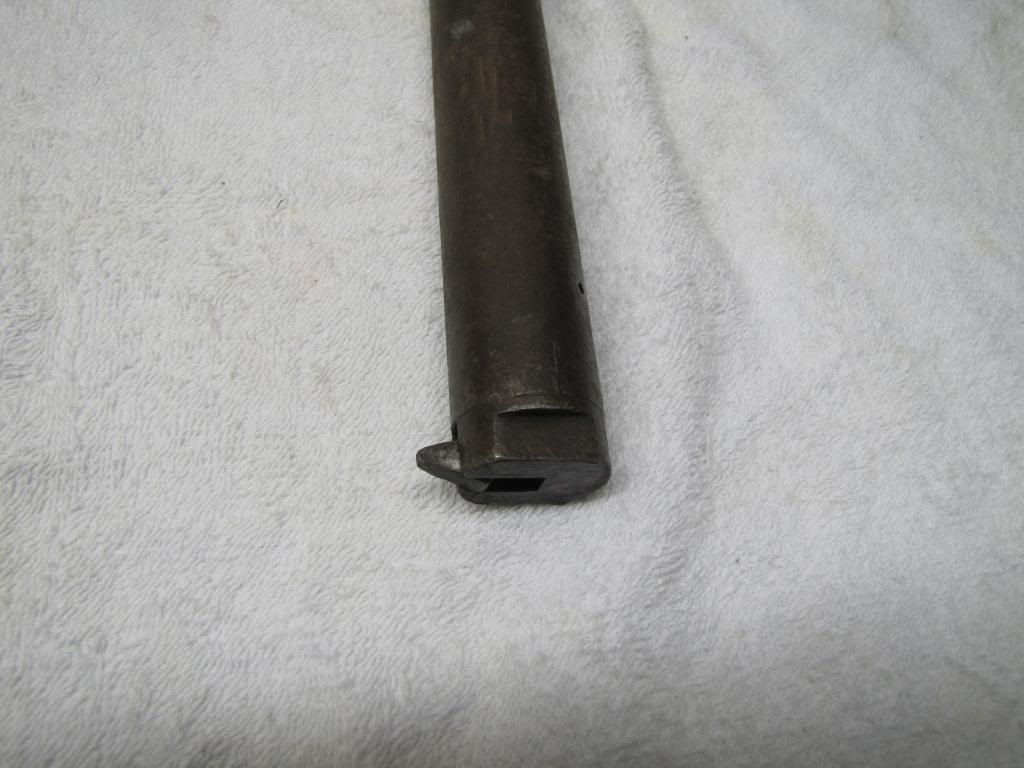 Ad for the Hoppy dial air pick hammer which has the adjustable stroke. The ad is from a monthly trade magazine from 1953 called Autobody and the Reconditioned Car. 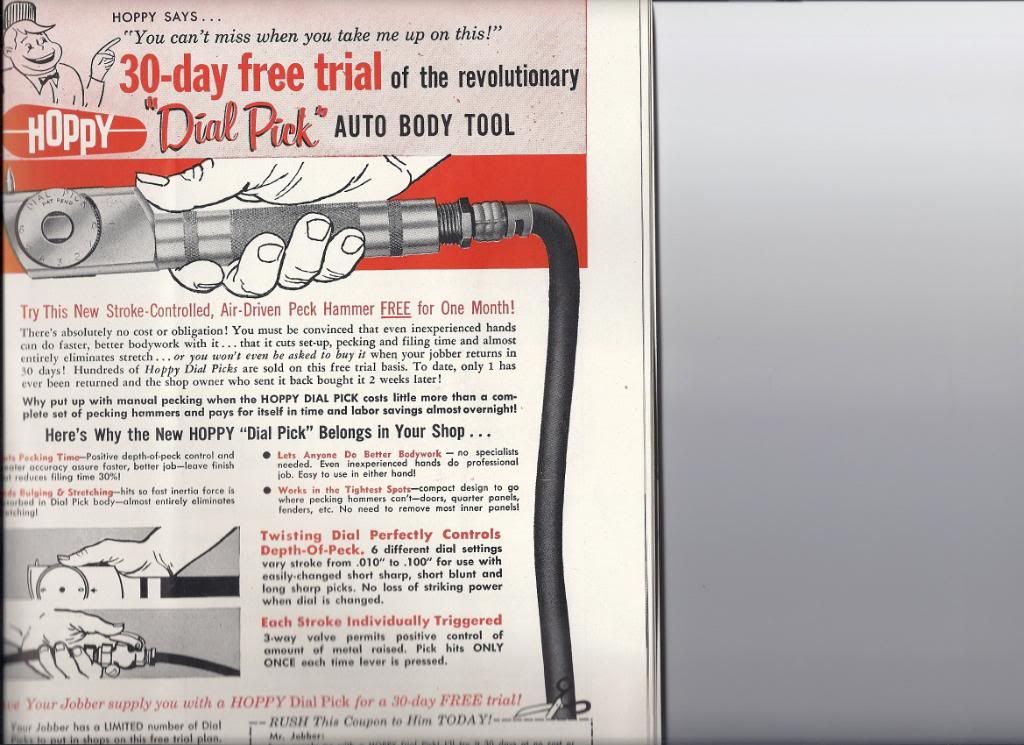
__________________
Currently working on How To Videos and custom metal 70 Chevelle gettin Sliced and Diced Anything But STOCK 70 Chevelle SS455 not a typo its a BUICK BABY 49 and 72 Chevy Trucks restored to original...close to it Drommer Stor....Norwegian for Dream Big http://s969.photobucket.com/albums/a...lle/?start=all https://www.flickr.com/photos/47922830@N03/ Pictures of my work and projects |
|
|

|
|
|
#6 |
|
Lost amongst the CORN
Join Date: Nov 2002
Location: Northern Iowa
Posts: 1,072
|
Re: What's hiding in the tool box part two
Now for my dolly and spoon collection. Most of the major companies offered pretty much the same design of dollies with just a little difference in shape so identifying dollies is pretty hard. For instance, a Porter Ferguson rail dolly is darn near the same as a Fairmount rail dolly.
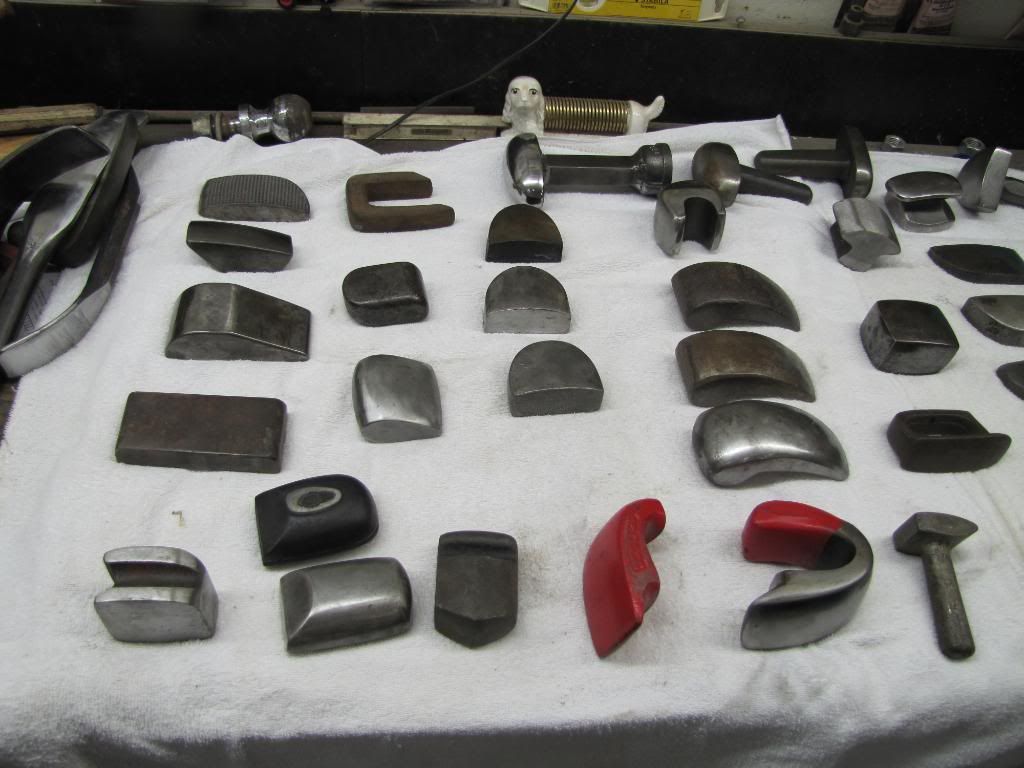  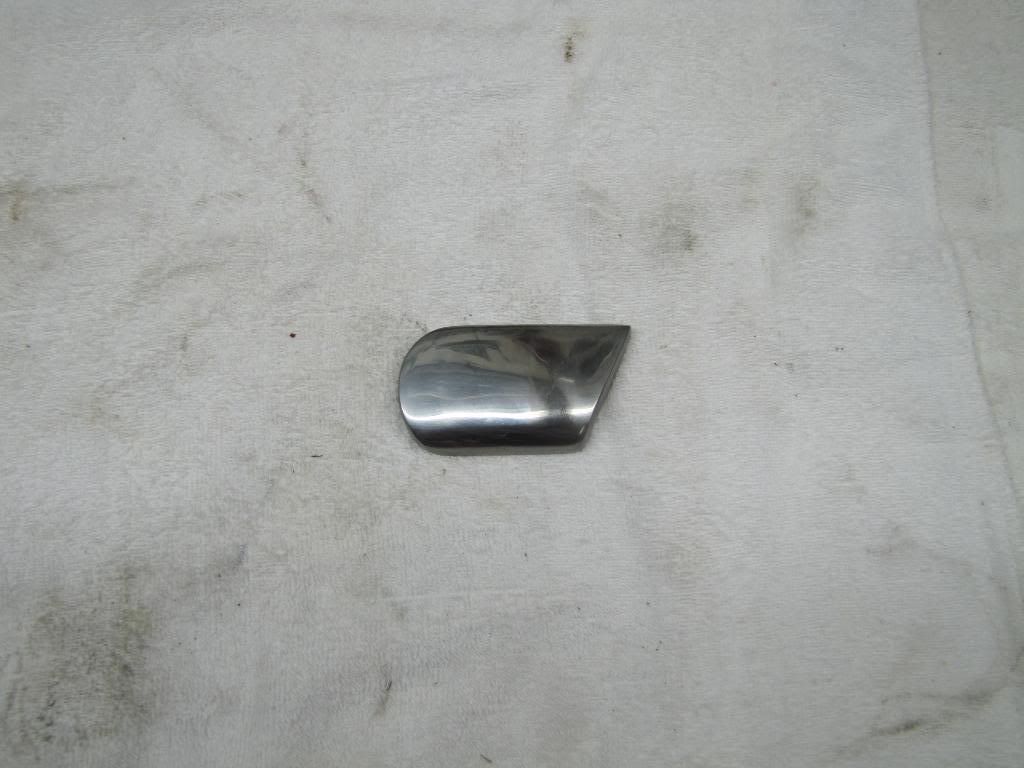 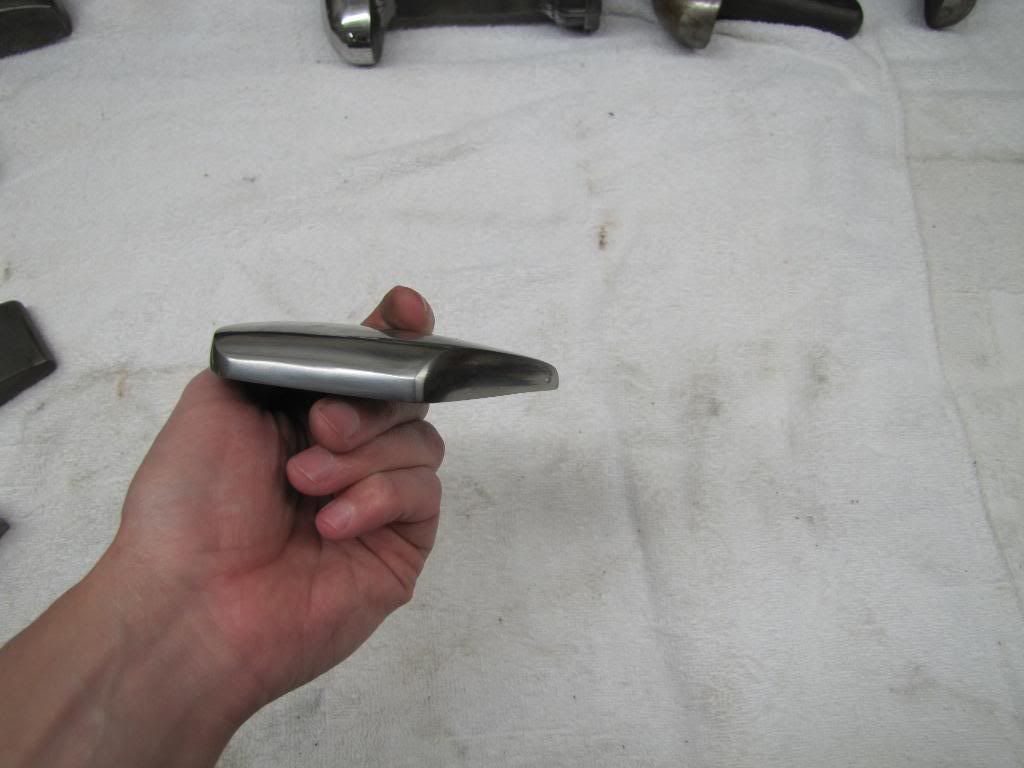 One of my favorite dollies, Herbrand introduced this BF-52 dolly in 1939. Unfortunately, this one is not an old Herbrand dolly but a direct copy made by Dagger tools which you can currently buy. Great dolly because the multiple crowns range from low to very high making the dolly useful for any panel. 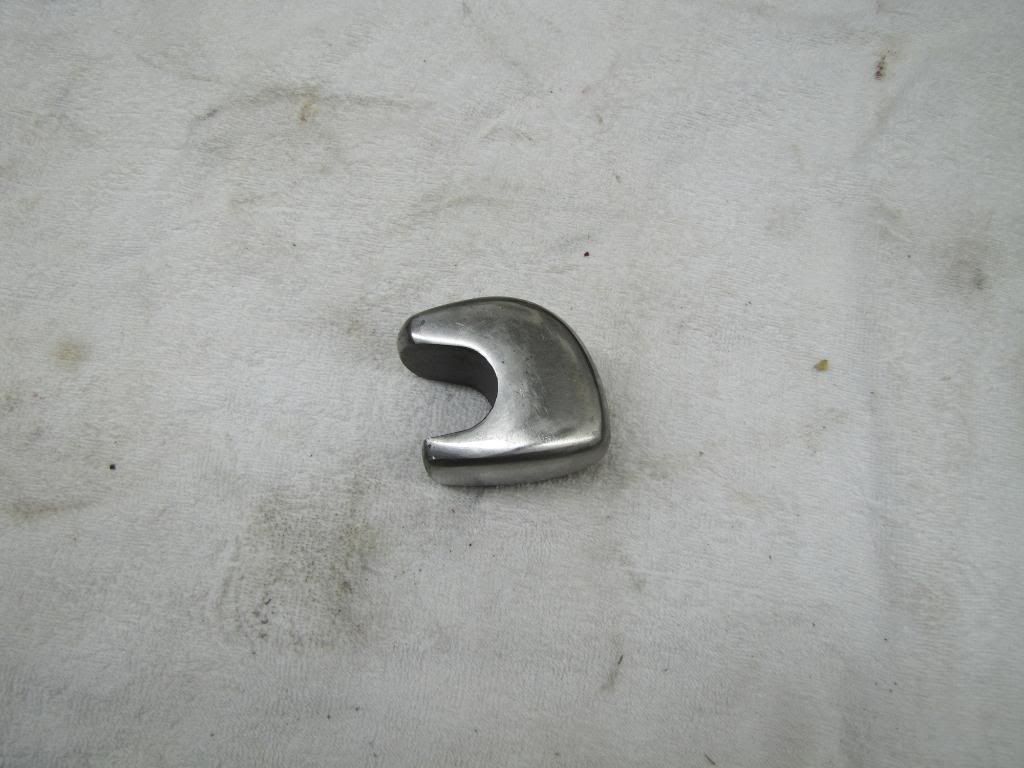 Comma dollies. Nice design with multiple crowns and a pointed end useful for getting into corners. The shiny one is a Martin and the back dolly is a Heller. A must have style of dolly.  Comma dollies typically are large dollies with a good weight useful for roughing out dents from the backside yet light enough for finishing work. 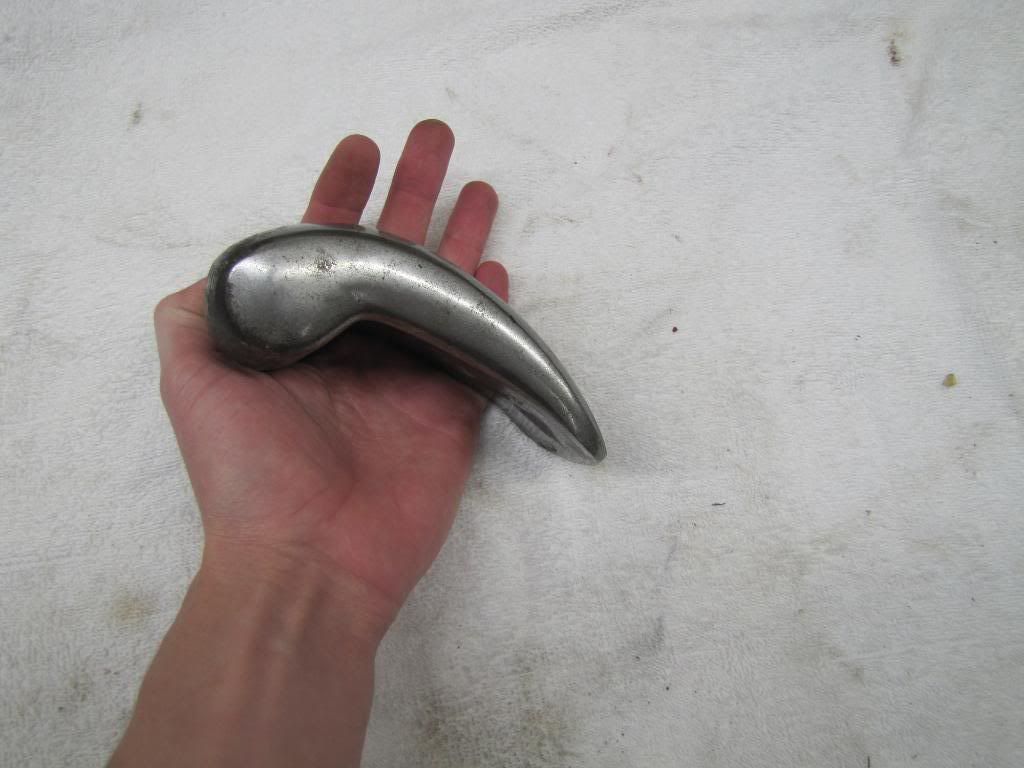 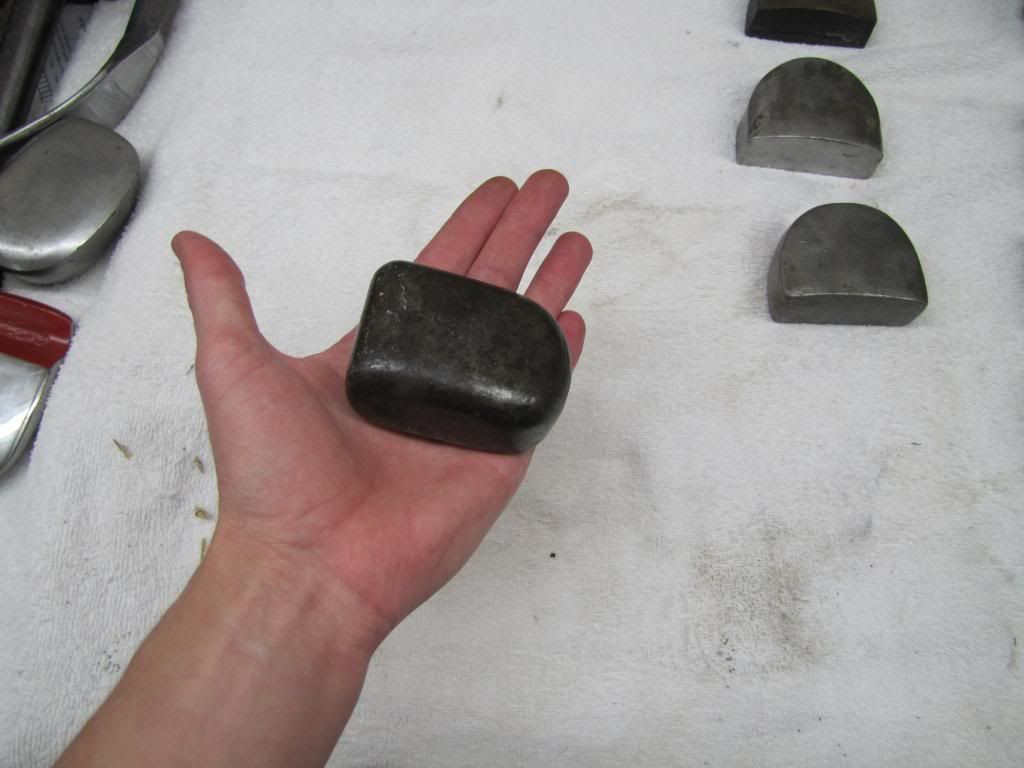 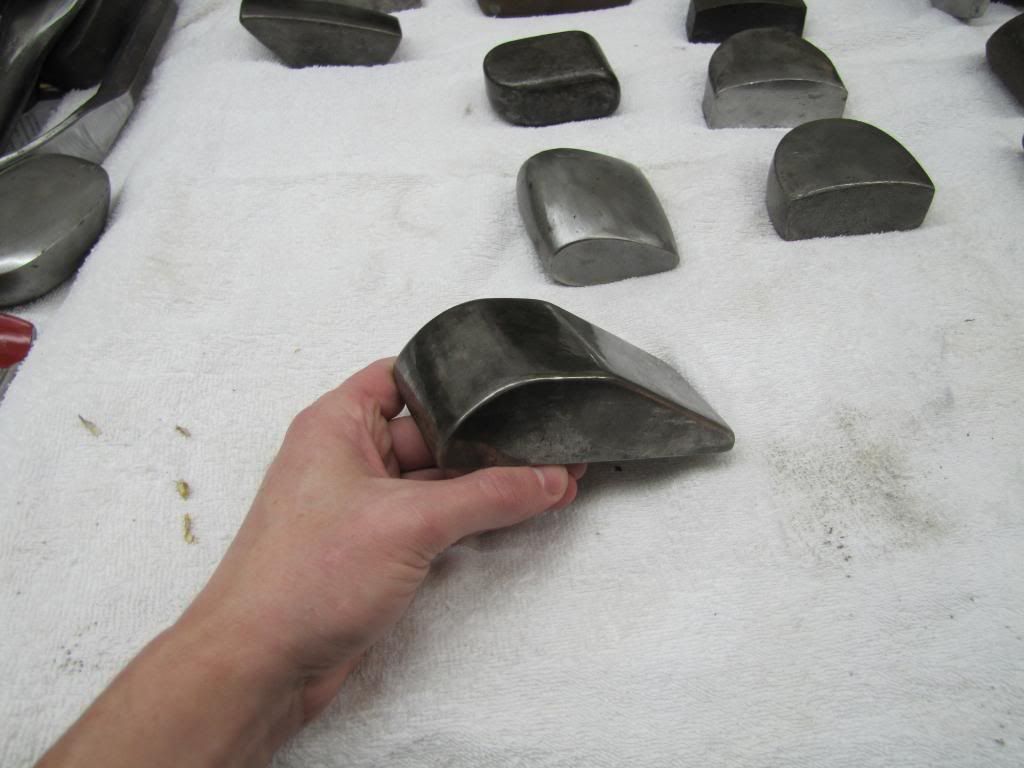 Another one of my favorite dollies which is another Herbrand copy currently made by Dagger tools. Herbrand introduced this design in 1939 as the BF-51. The design was also used by Blue-Point and no longer available through Blue-Point but can be bought from Dagger tools. 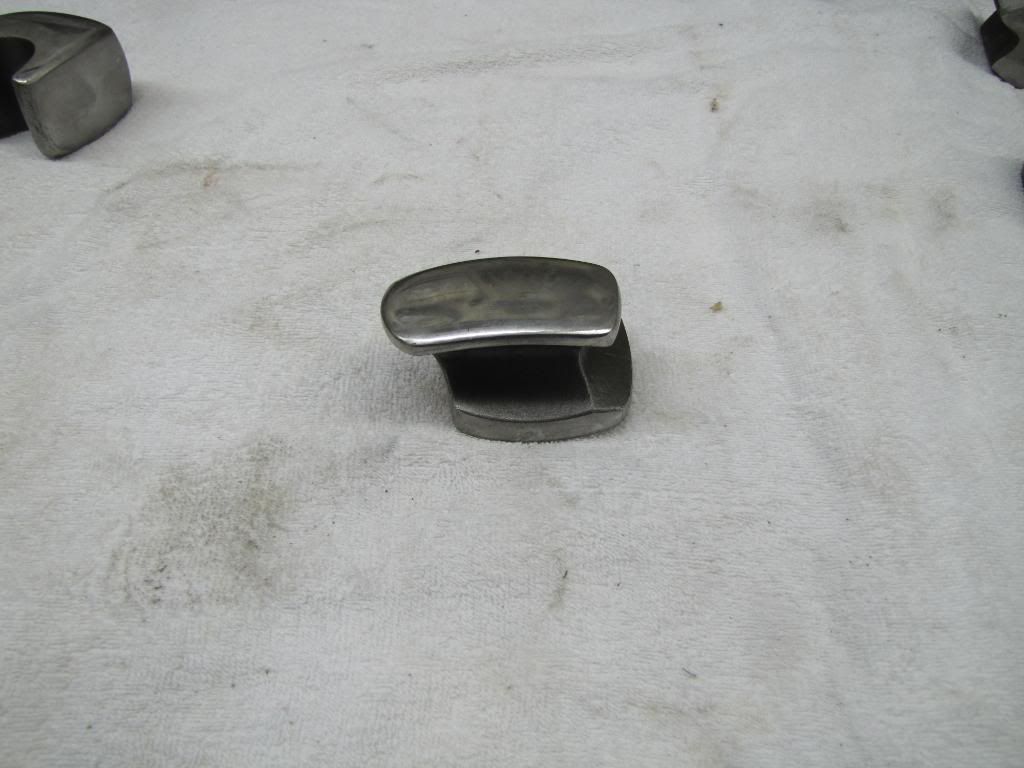 Nice large working area. A good dolly has crown in both directions. You don’t want a dolly with crown in one direction then flat in the other direction when working dents. 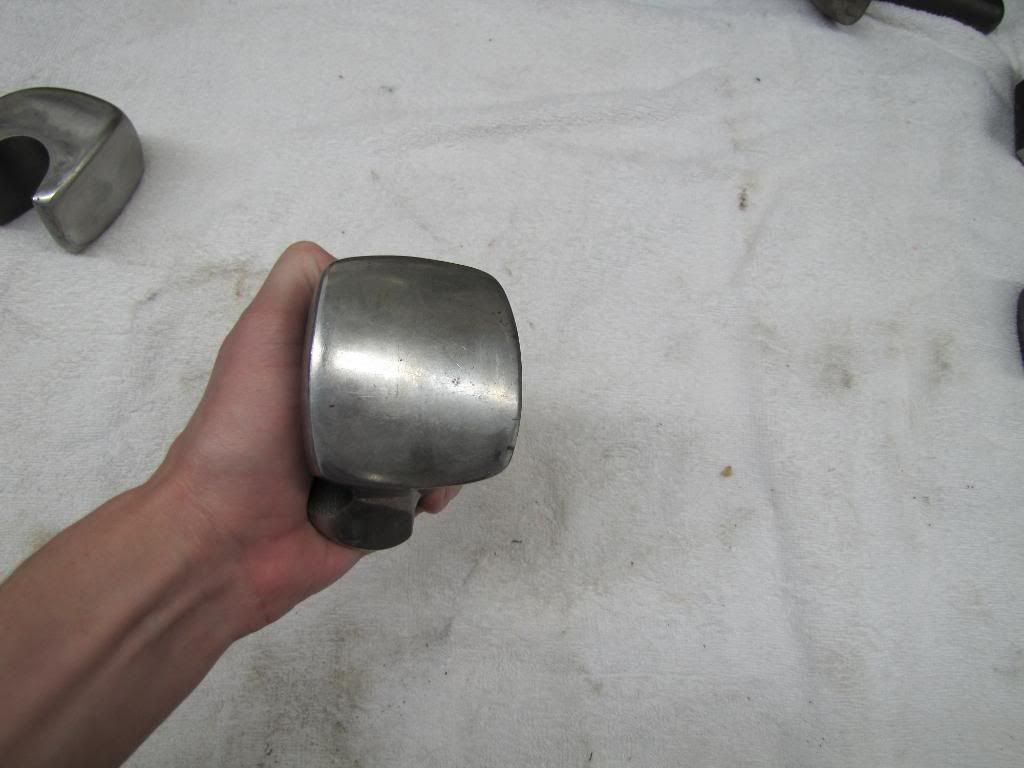 The Blue-Point version BF-714, pretty much the same dolly but pushing 30 to 40 years old and no longer made. For those whom do not know Blue-Point is the cheaper line of tools by Snap-on. 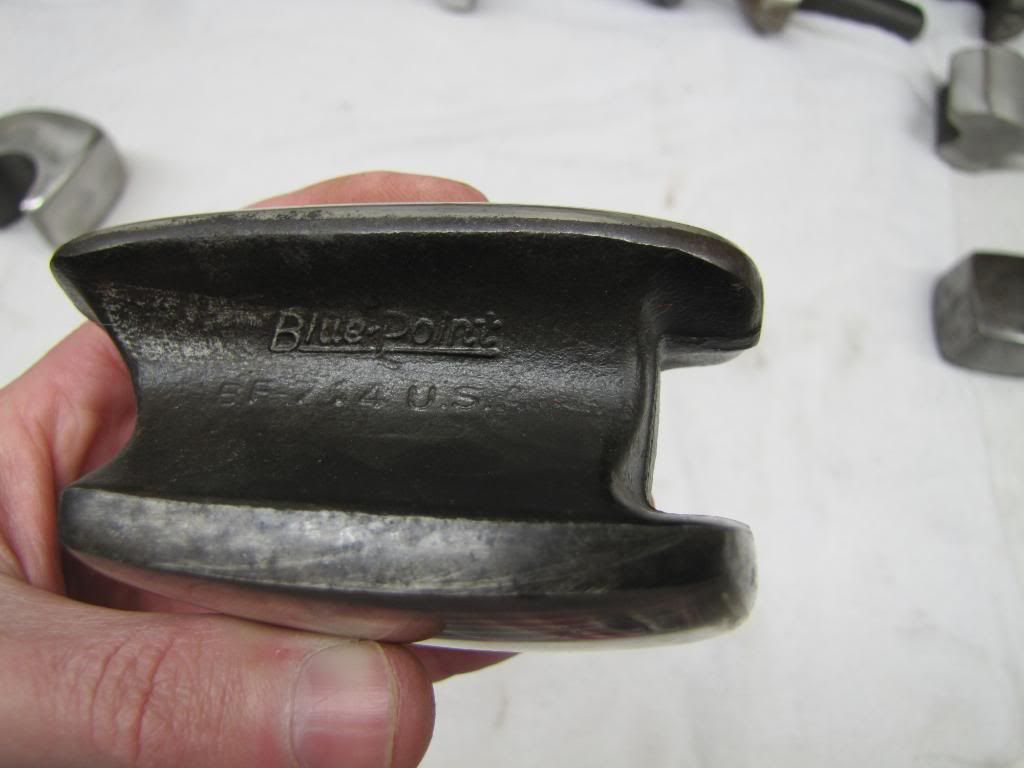 Useful for defining edges, have no idea what this thing really is for but sometimes ordinary scrap makes for the handiest tools. 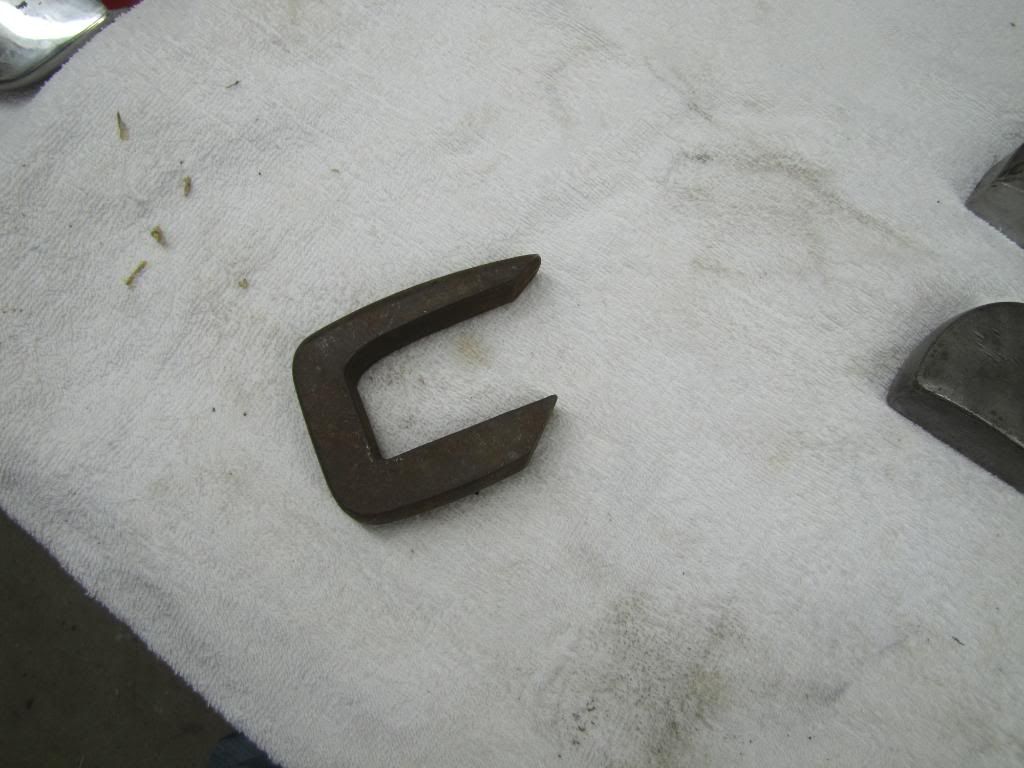 Another dolly meant for edges. Cars made prior to the mid to late 30’s had wire beaded edges. The wire in the edges added strength to the perimeter of fenders. A wire was placed next the edge then the edge was rolled over the wire. This type of dolly helps develop the fold so the metal can roll over the wire. The factories had large expensive machines to create a wired edge, the repair man had a dolly and hammer. 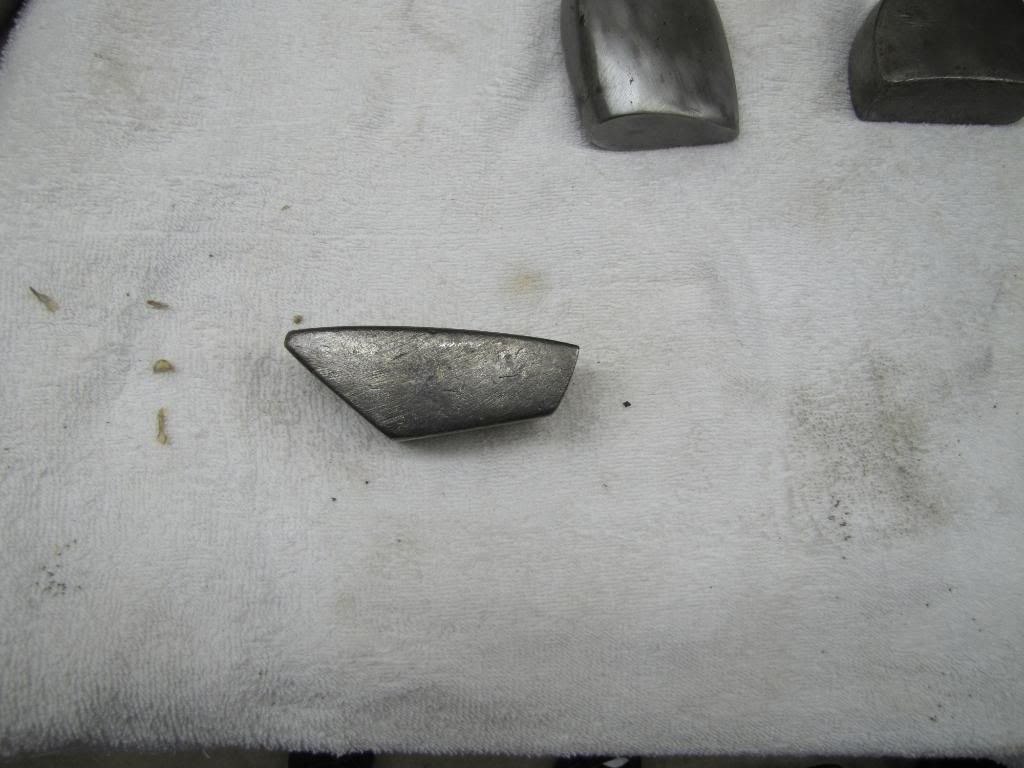 This style is often called a Heel dolly, one of the staples to every body man. A must have style of dolly. The bottom surface is flat along with one other face. It’s an excellent dolly when you need to turn a flange or installing door skins. 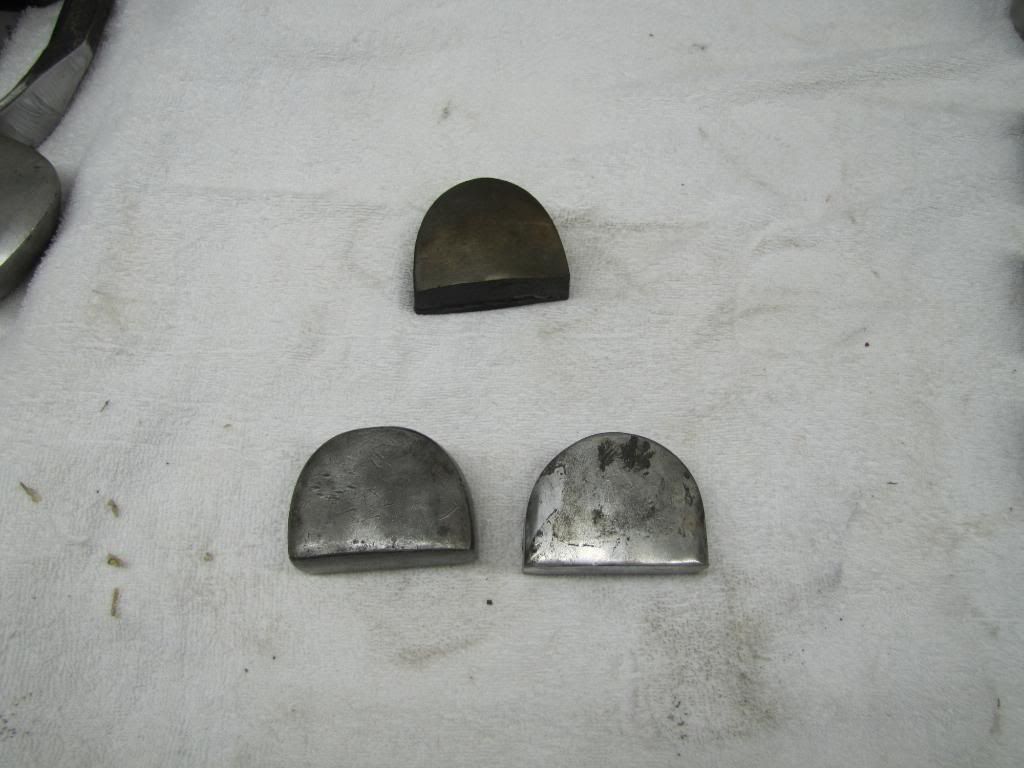 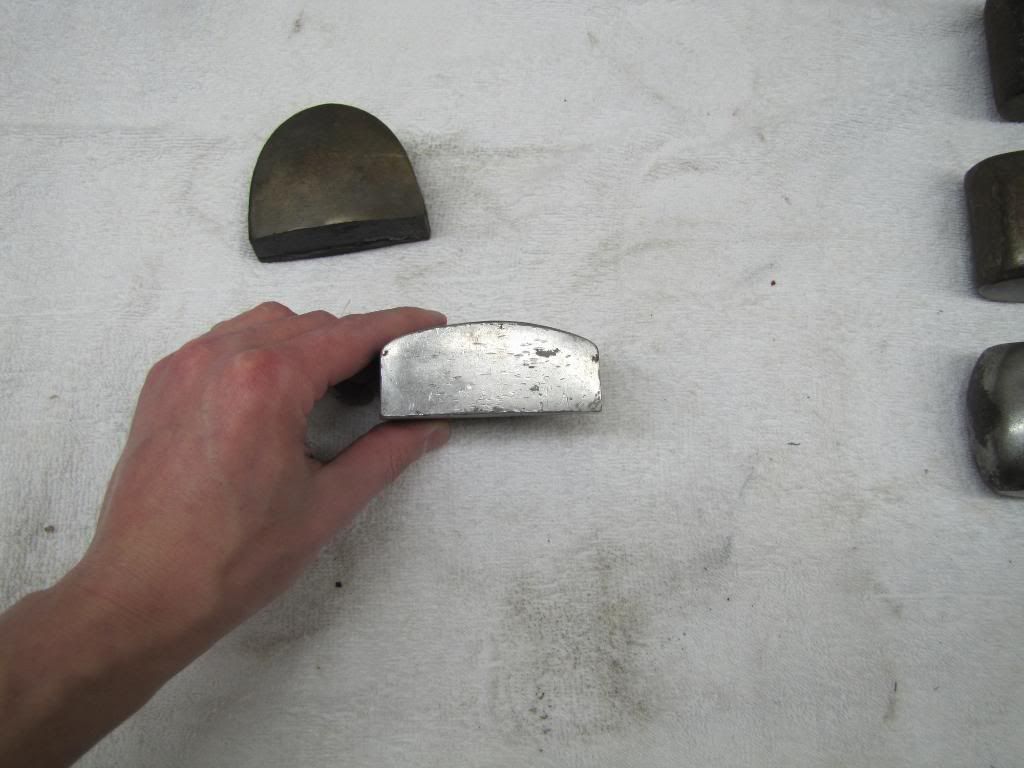 Not all dollies are created equal nor should be used as actual tools. Dolly on the right is a top quality forged dolly; the one of the left is a piece of junk cast iron import dolly. Every import dolly I’ve seen looks like the crappy dolly with cast lines so they are easy to spot. If you see hammers and dollies with rough edges and cast lines avoid like the plague. Cast iron is too soft to be used as metal working tools and mars or dings with ease. Forged tools when struck create a ring, cast iron creates a thud, avoid the thud! 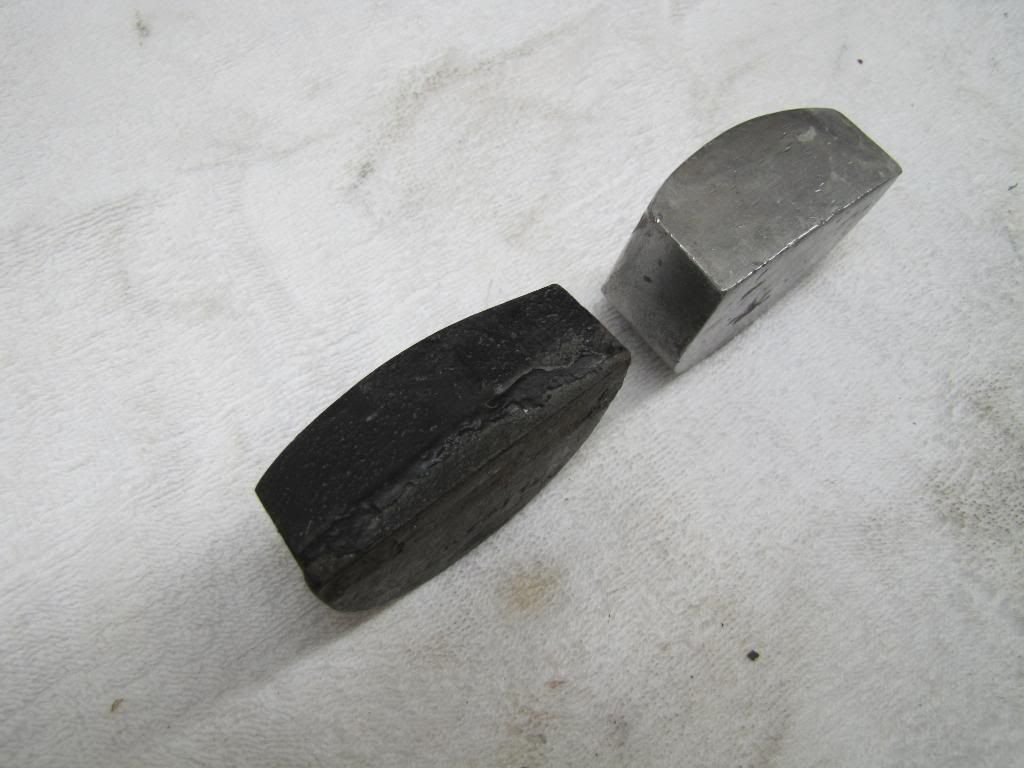
__________________
Currently working on How To Videos and custom metal 70 Chevelle gettin Sliced and Diced Anything But STOCK 70 Chevelle SS455 not a typo its a BUICK BABY 49 and 72 Chevy Trucks restored to original...close to it Drommer Stor....Norwegian for Dream Big http://s969.photobucket.com/albums/a...lle/?start=all https://www.flickr.com/photos/47922830@N03/ Pictures of my work and projects Last edited by sevt_chevelle; 04-03-2011 at 06:14 PM. |
|
|

|
|
|
#7 |
|
Registered User
Join Date: Nov 2010
Location: Greer South Carolina
Posts: 17
|
Re: What's hiding in the tool box part two
Very Nice Collection!!!
__________________
 70' 4wd Lwb 70' 4wd Lwb 70' 2wd Swb 70' 2wd Swb 99' 3 door Silverado...215,000 miles strong 99' 3 door Silverado...215,000 miles strong
|
|
|

|
|
|
#8 |
|
1 thing at a time is progress.
Join Date: Jun 2007
Location: Ball Ground GA
Posts: 5,511
|
Re: What's hiding in the tool box part two

__________________
Alan
Philippians 2:14-16 |
|
|

|
|
|
#9 |
|
Registered User
Join Date: Aug 2005
Location: Pasadena,Tx /Pto Pta DR
Posts: 5,415
|
Re: What's hiding in the tool box part two
You have too much time on your hands looks like
 sorry sorry
Last edited by mbgmike; 04-03-2011 at 10:15 PM. |
|
|

|
|
|
#10 |
|
Registered User
Join Date: Aug 2008
Location: Pittsburg, KS
Posts: 2,466
|
Re: What's hiding in the tool box part two
cool. thanks for sharing.
__________________
Doug Looking for a 67-72 short bed driver..... |
|
|

|
|
|
#11 |
|
Senior Member
 Join Date: Oct 2013
Location: Bay Area, CA
Posts: 493
|
Re: What's hiding in the tool box part two
Refreshing an old post. Very cool.
|
|
|

|
|
|
#12 |
|
Registered User
Join Date: Mar 2014
Location: Lockhart Texas
Posts: 66
|
Re: What's hiding in the tool box part two
Awesome! Brings me back to 1980 when I first started working for my dads bodyshop.Some of the older metal men had tools as such.Watching those craftsmen heat,shrink,pick & file was a tremendous experience.I still work in the auto body trade and the new crop of body men just aren't the same.There are definitely some talented ones but a lot of them just knock down the highs and fill in the lows!or just replace panels.Then again with this tin can metal these days with only a couple of swipes with the file you will break through.Its a lost art.I would love to have those tools.

|
|
|

|
|
|
#13 |
|
Registered User
Join Date: Oct 2006
Location: Orland Park Il
Posts: 2,041
|
Re: What's hiding in the tool box part two
  Nice collection you have, thanks for sharing. The handle has been replaced on the pick, it has no markings but is good quality. I've never seen another Fairmount like this one....
__________________
68 GMC C3500 Longhorn DRW 67 Chevy C10 LWB 90 Mustang Gt 90 Mustang Notchback |
|
|

|
 |
| Bookmarks |
|
|